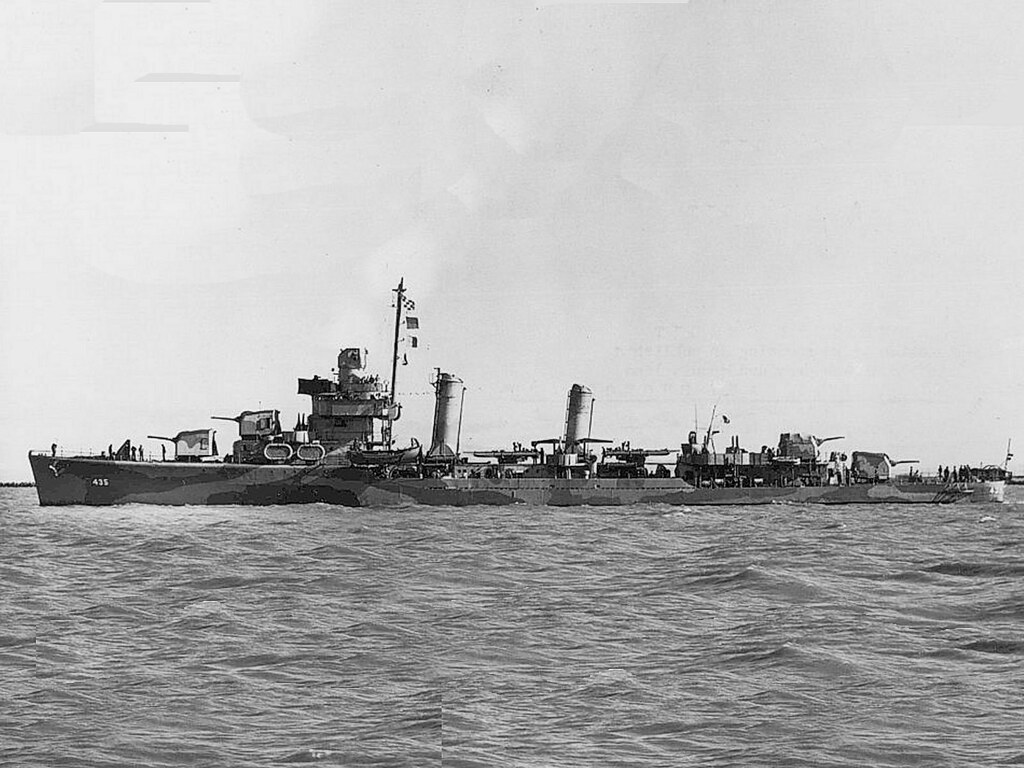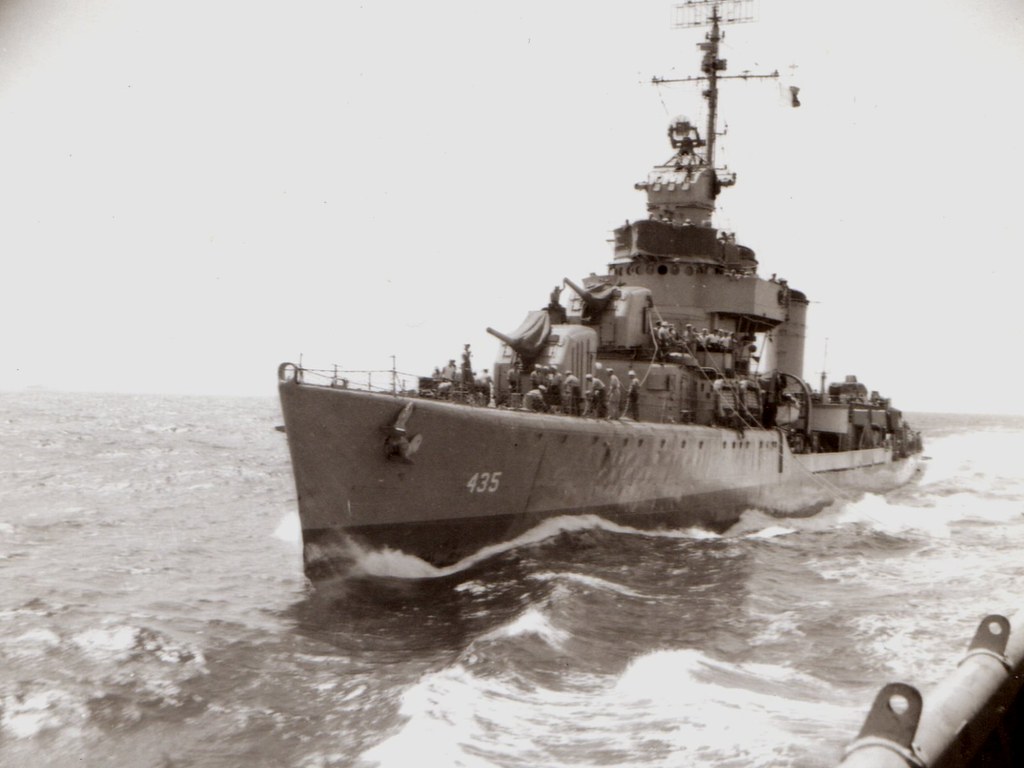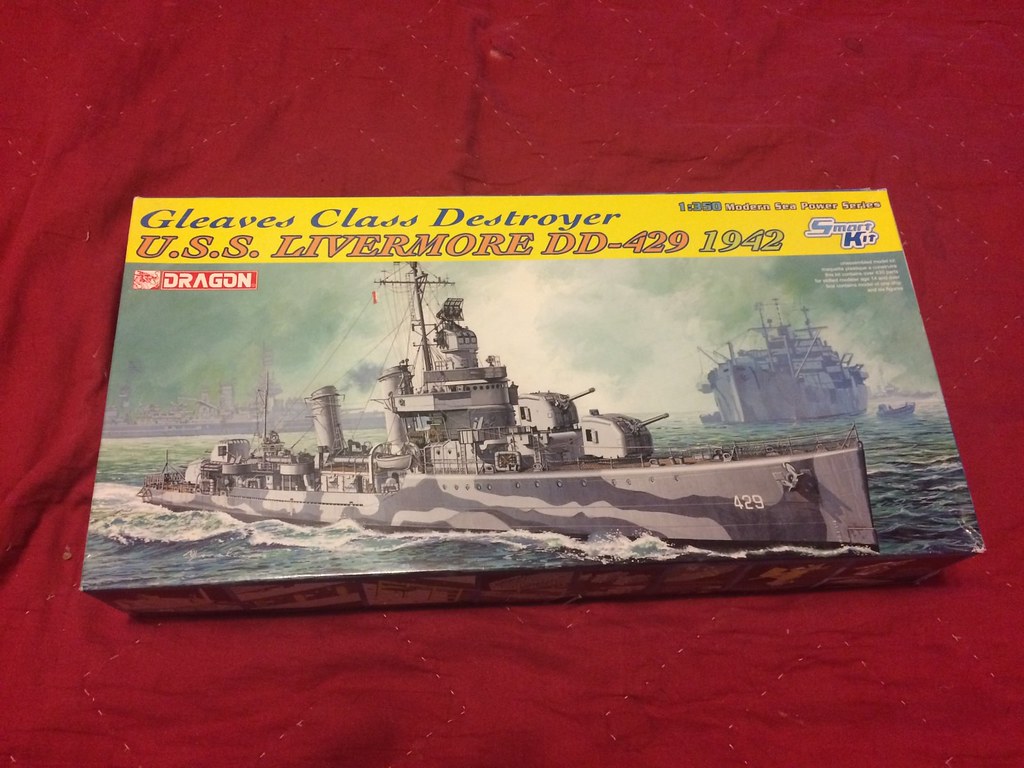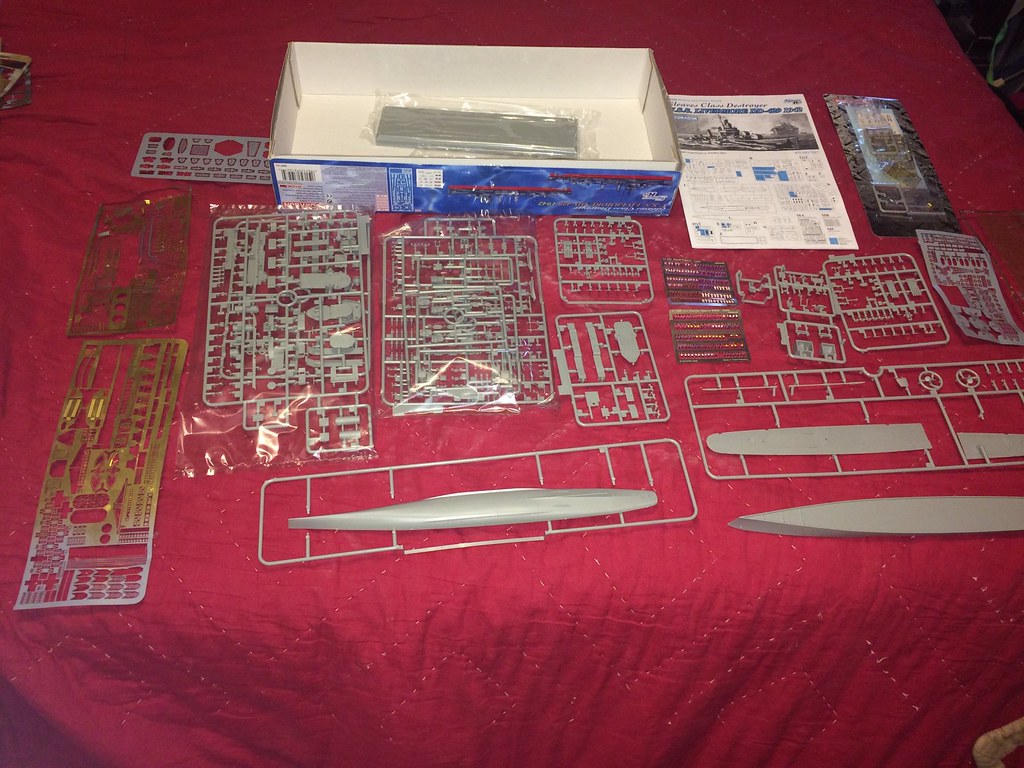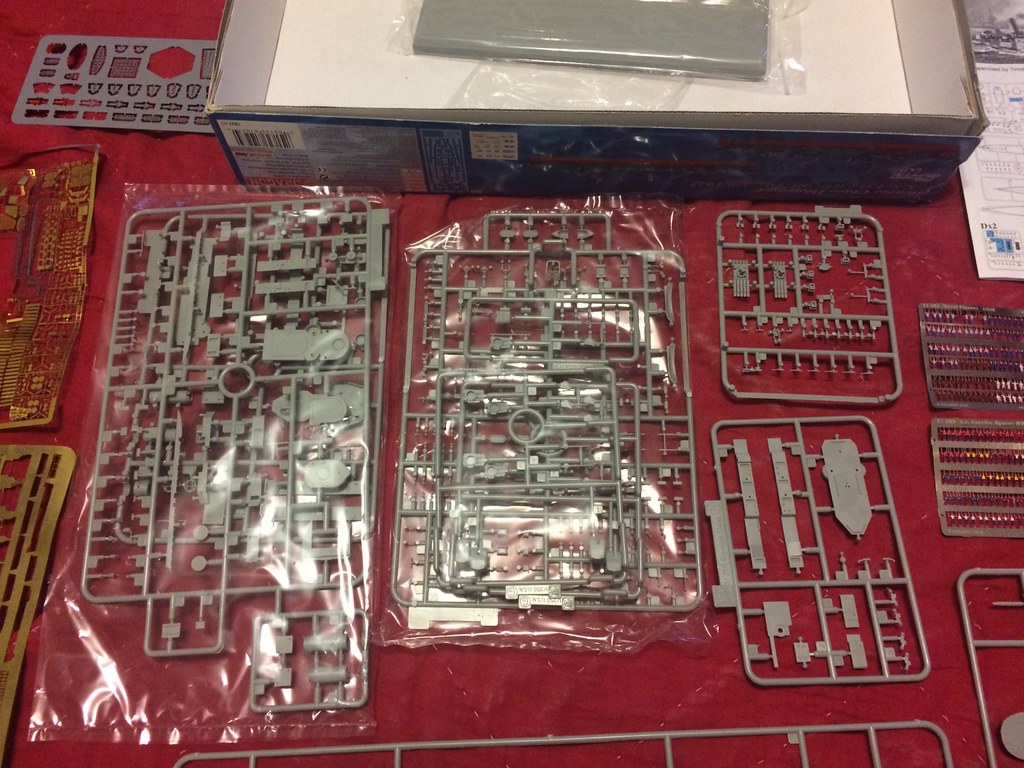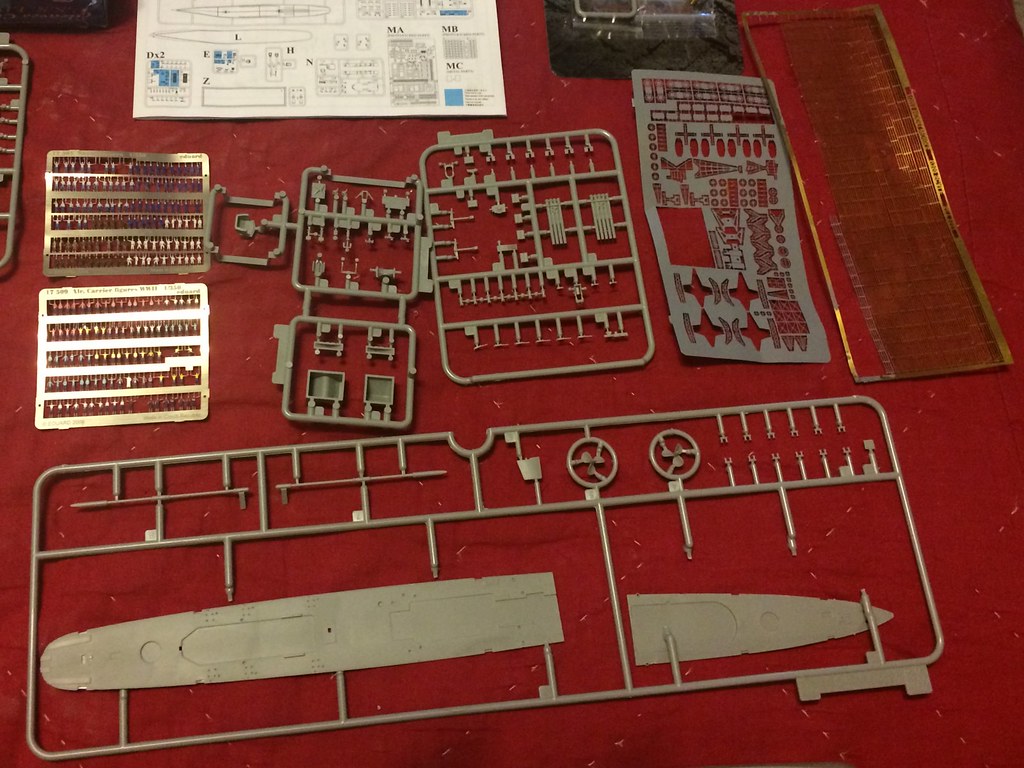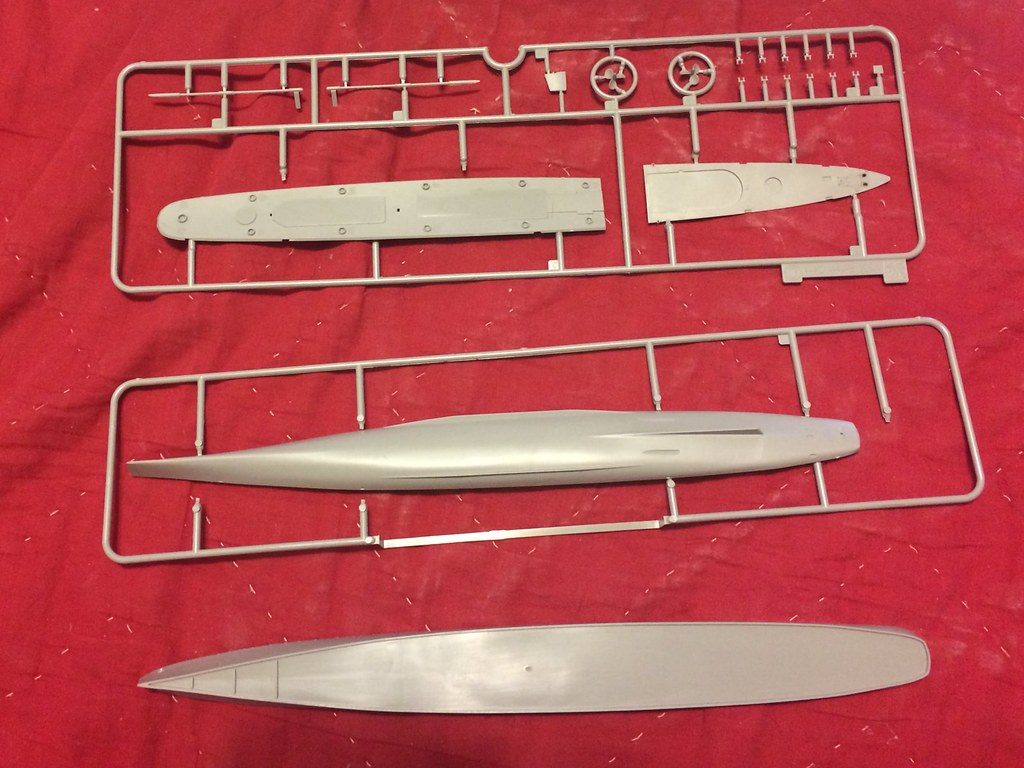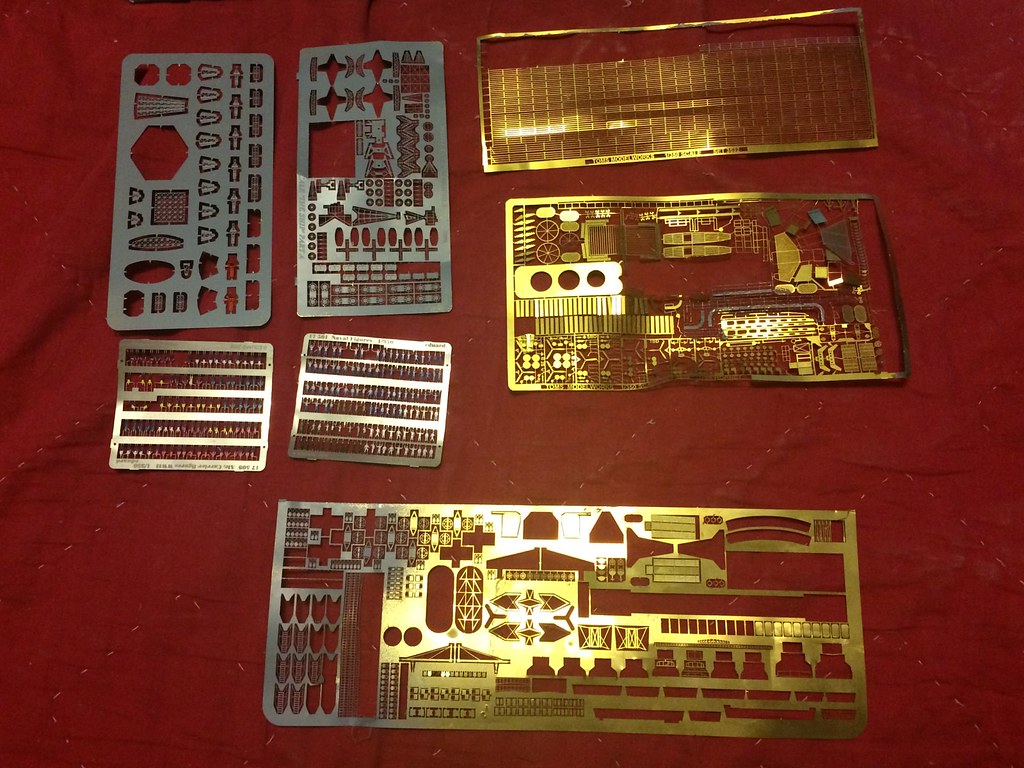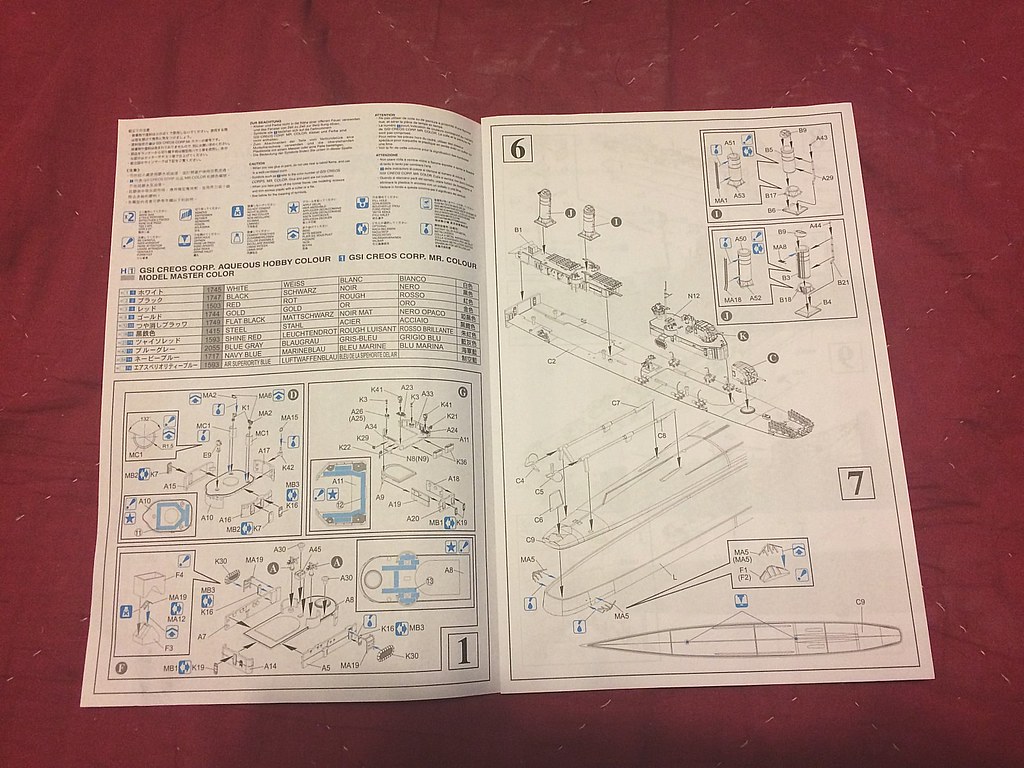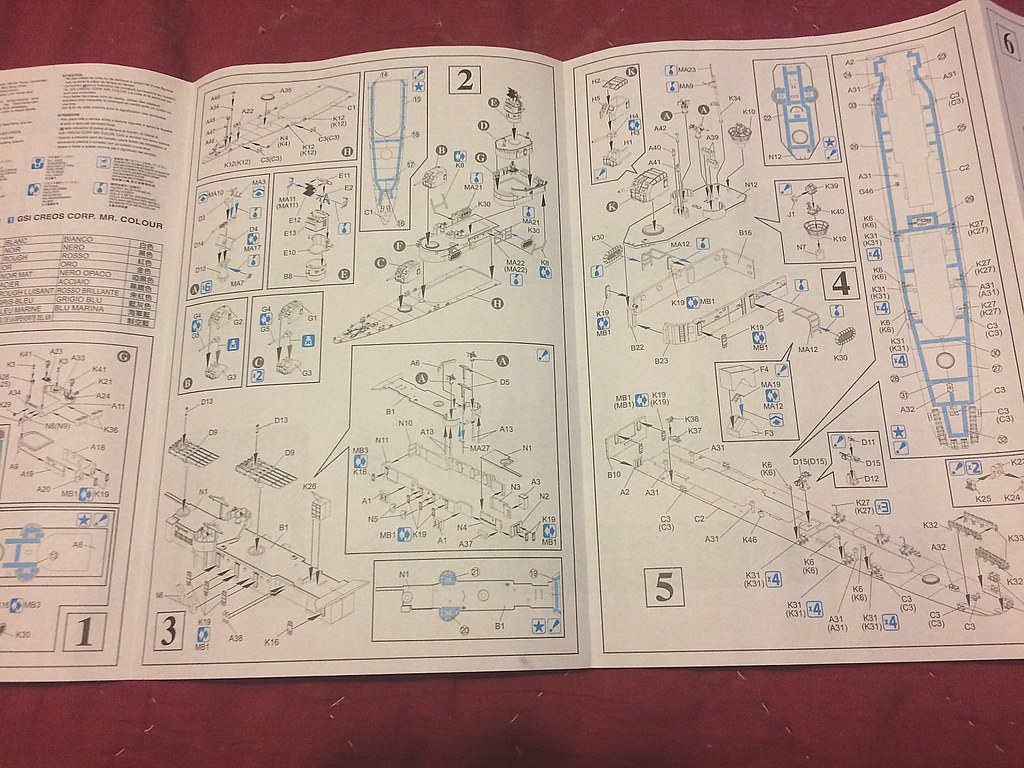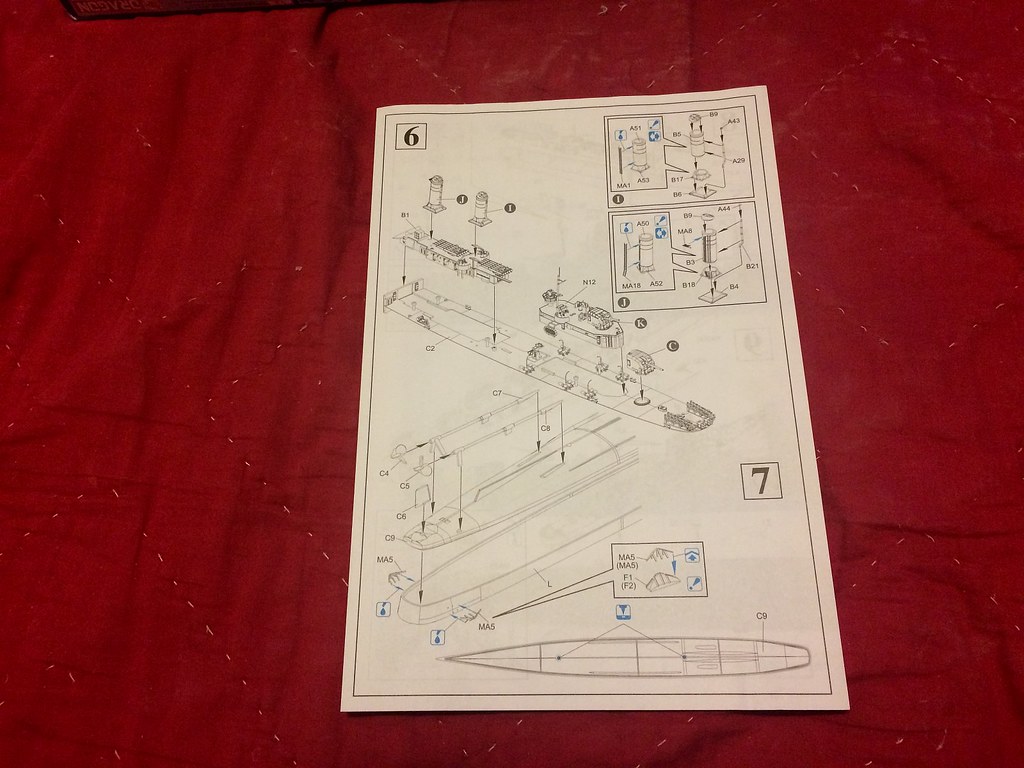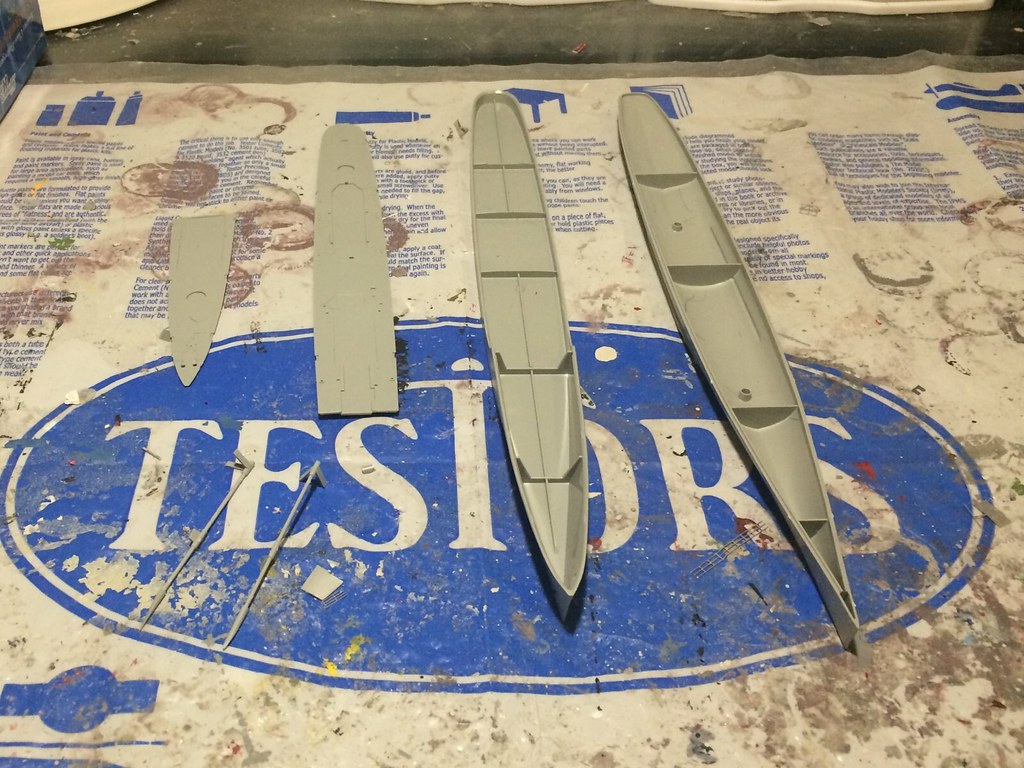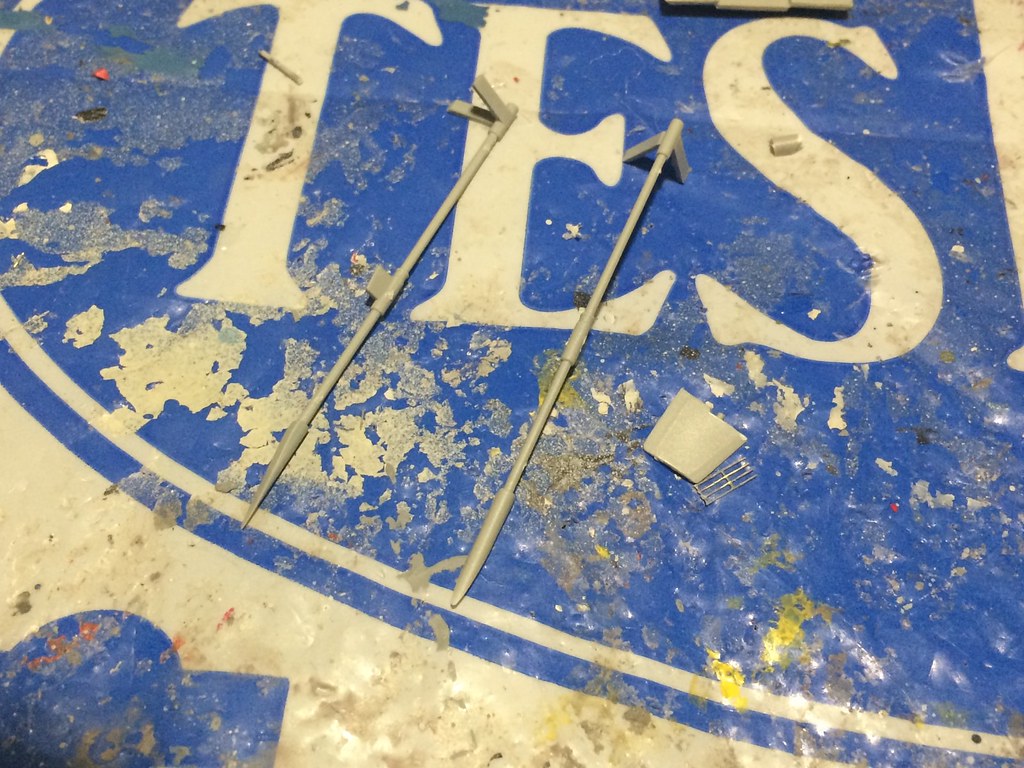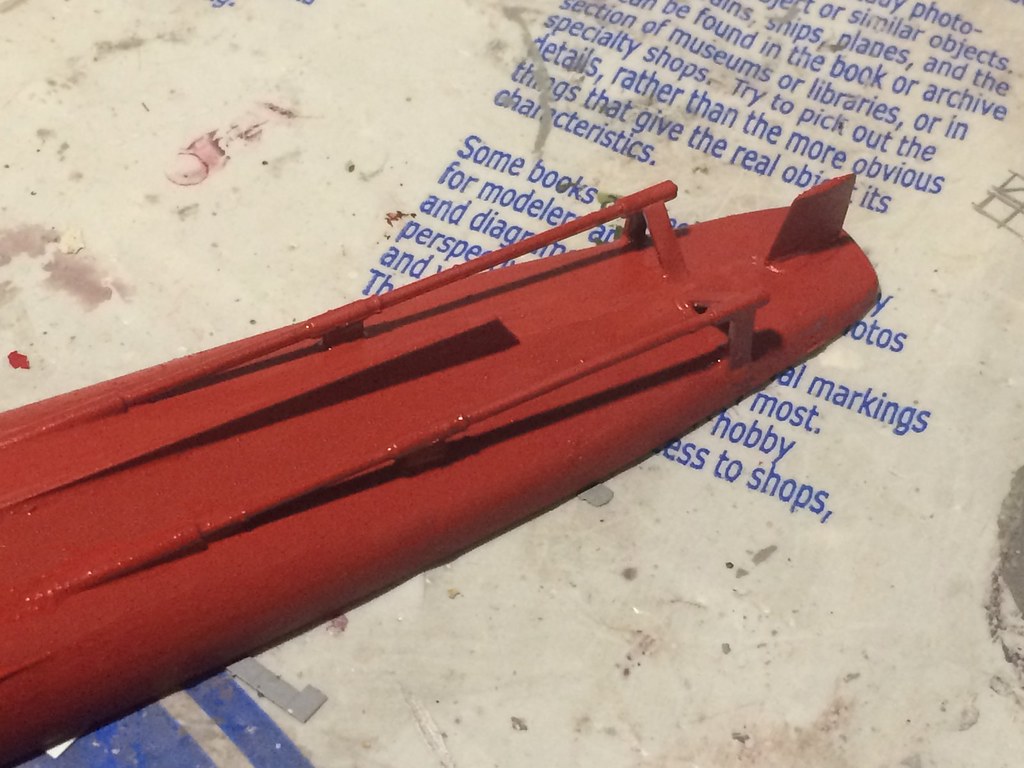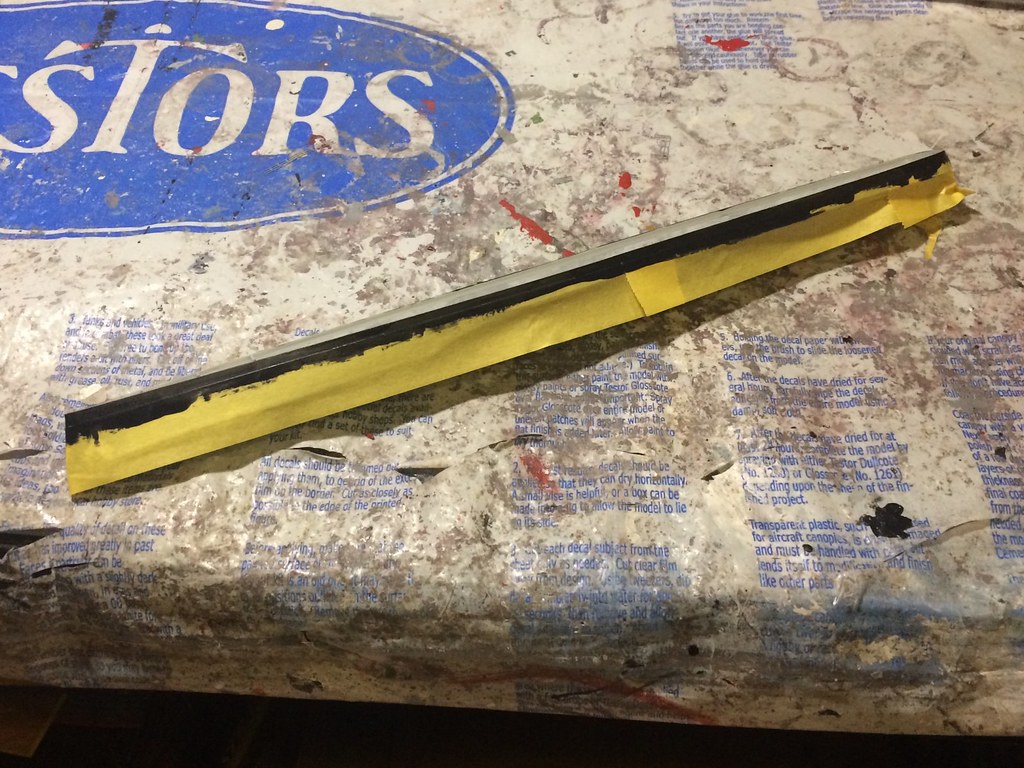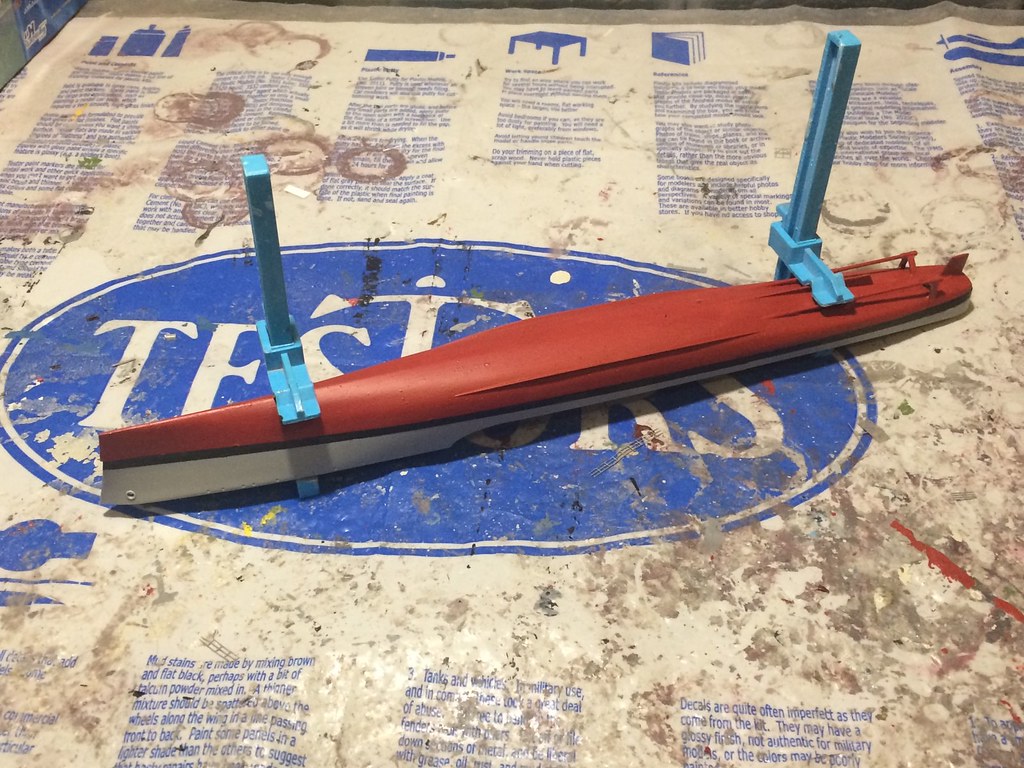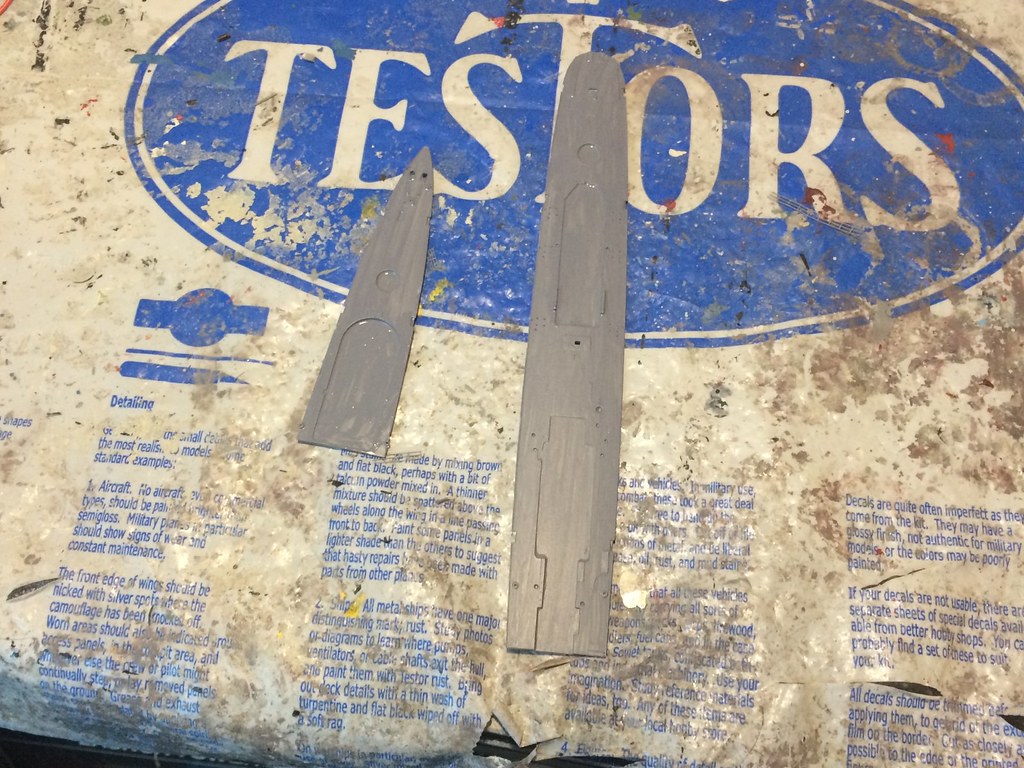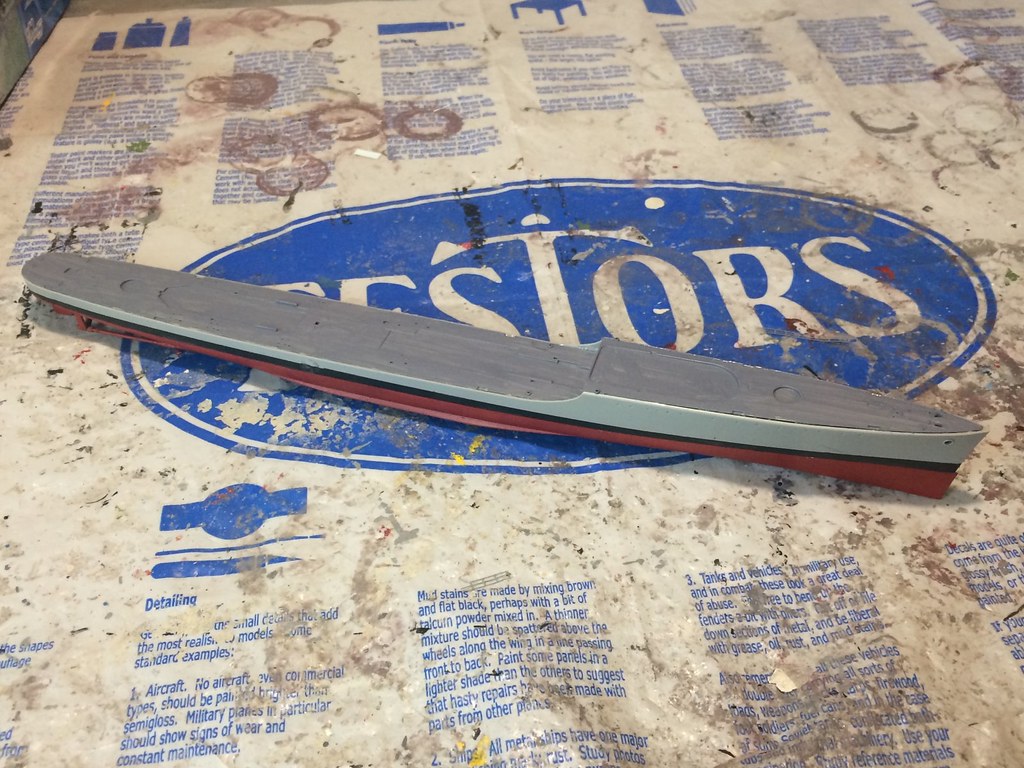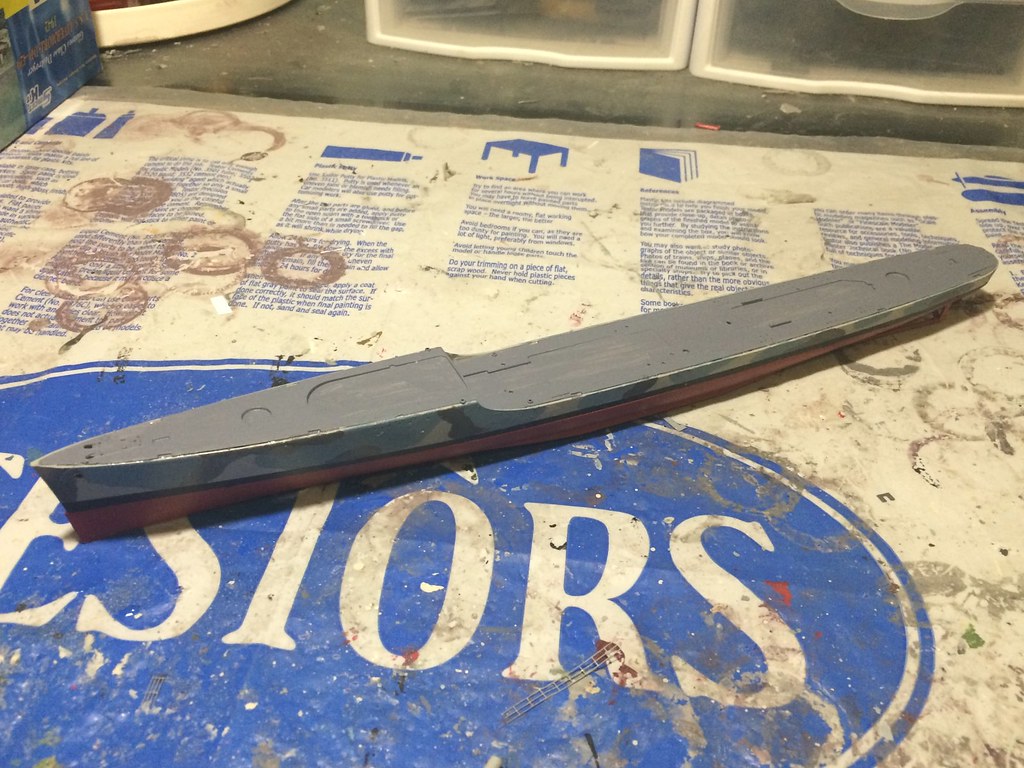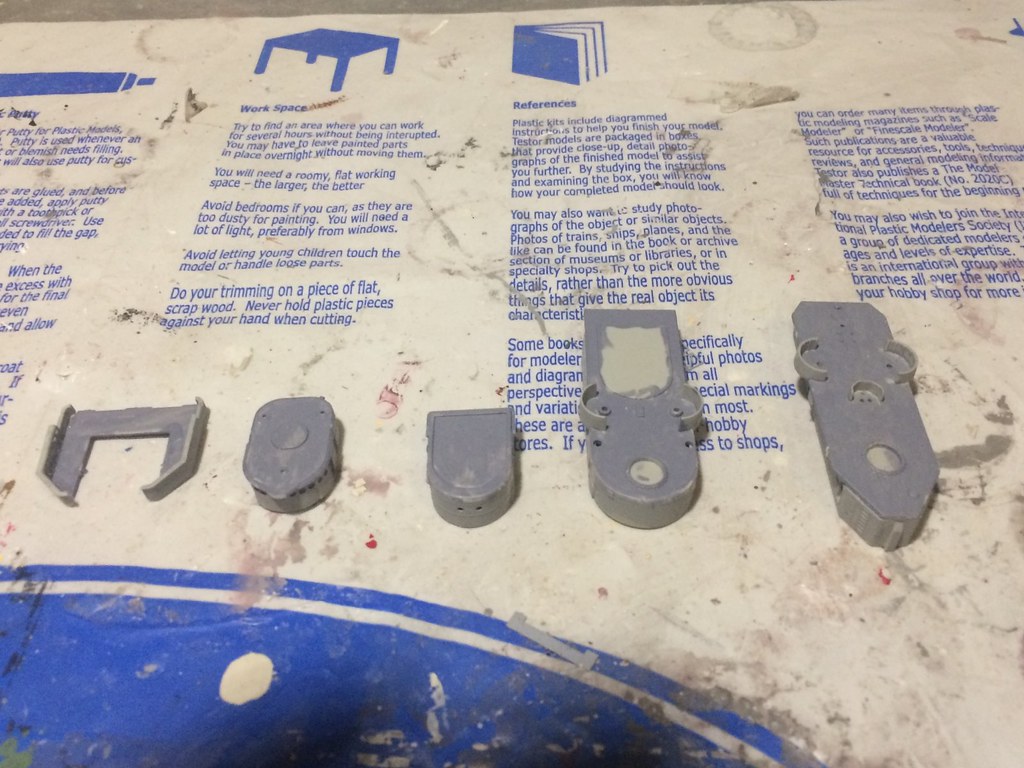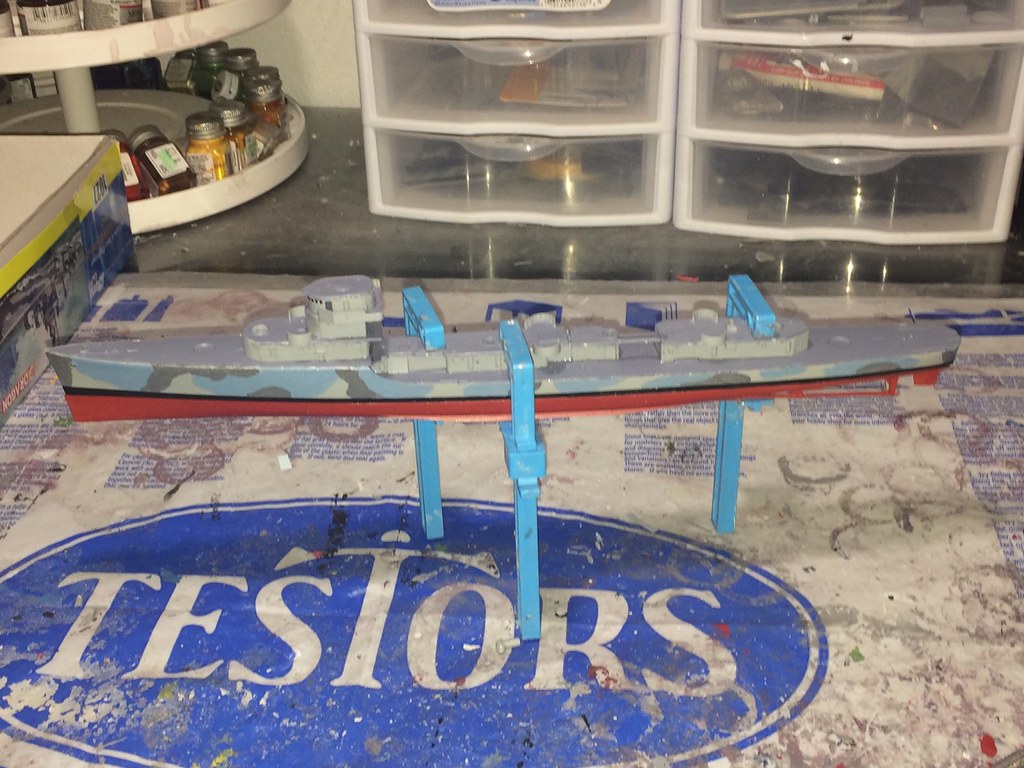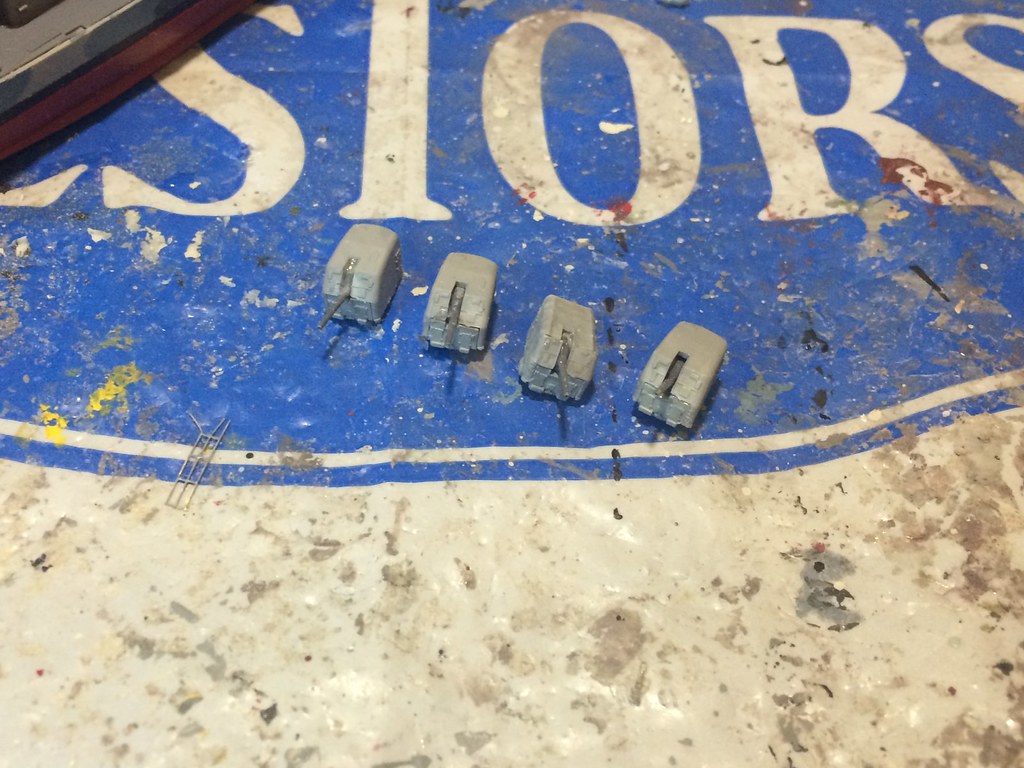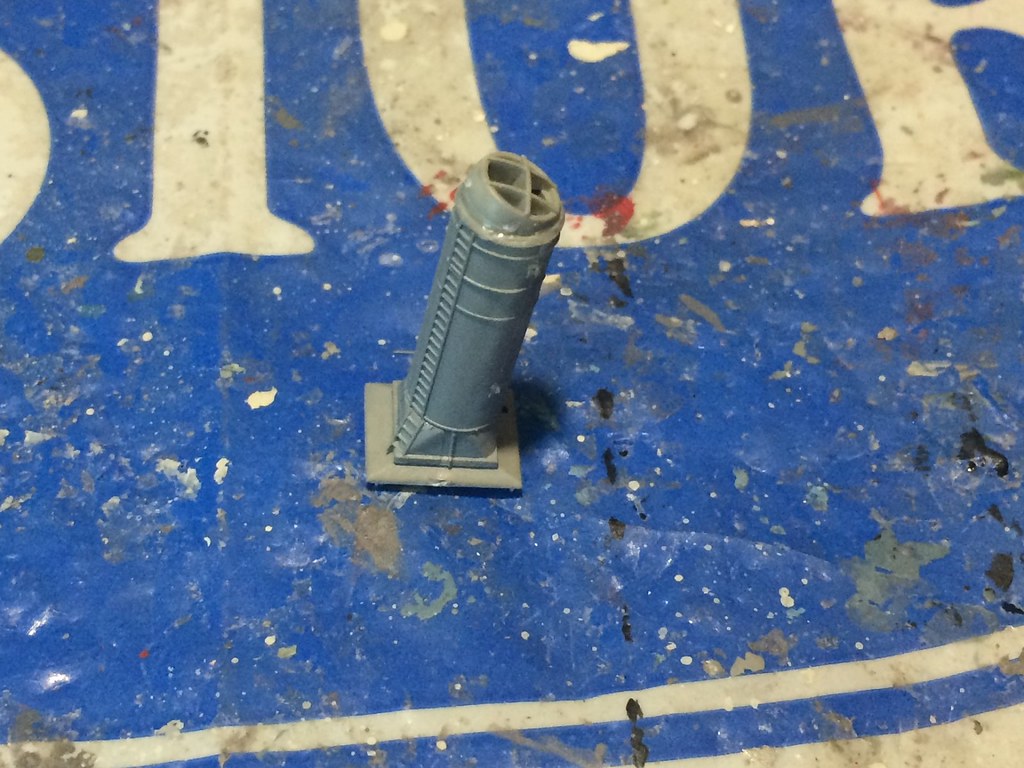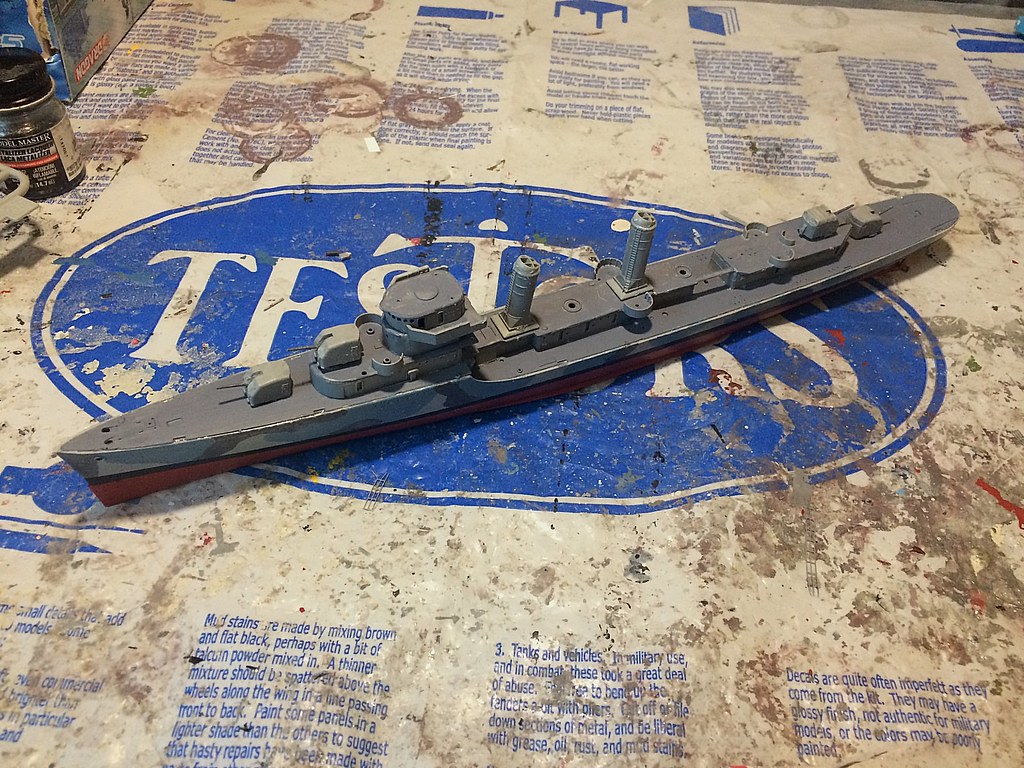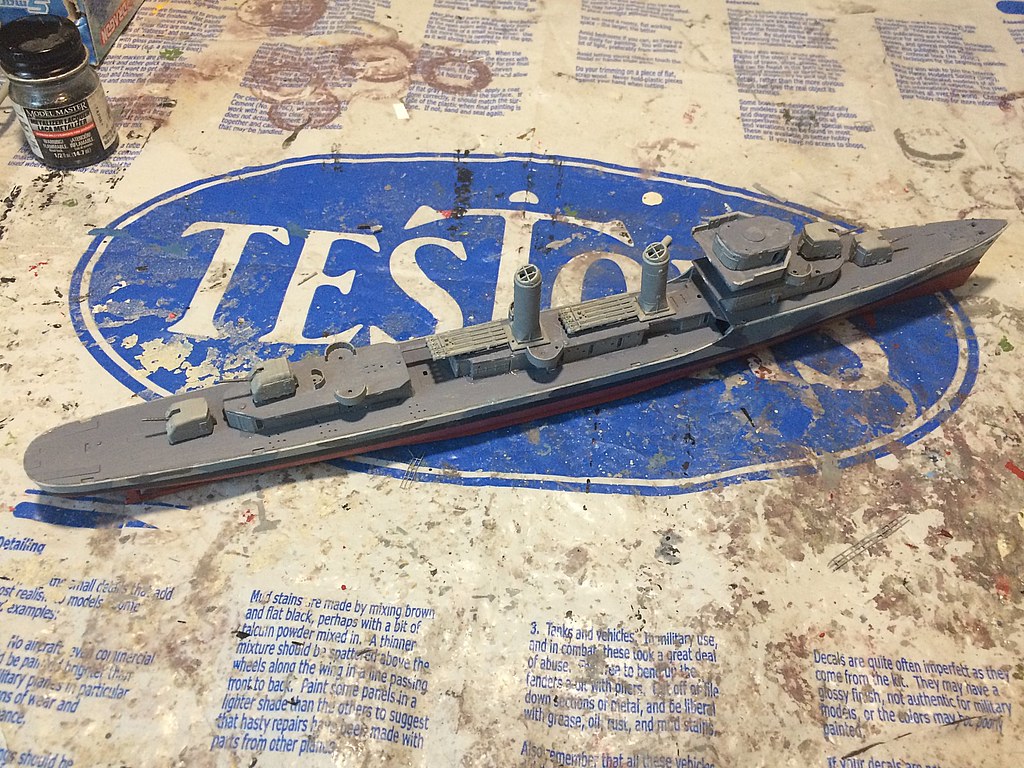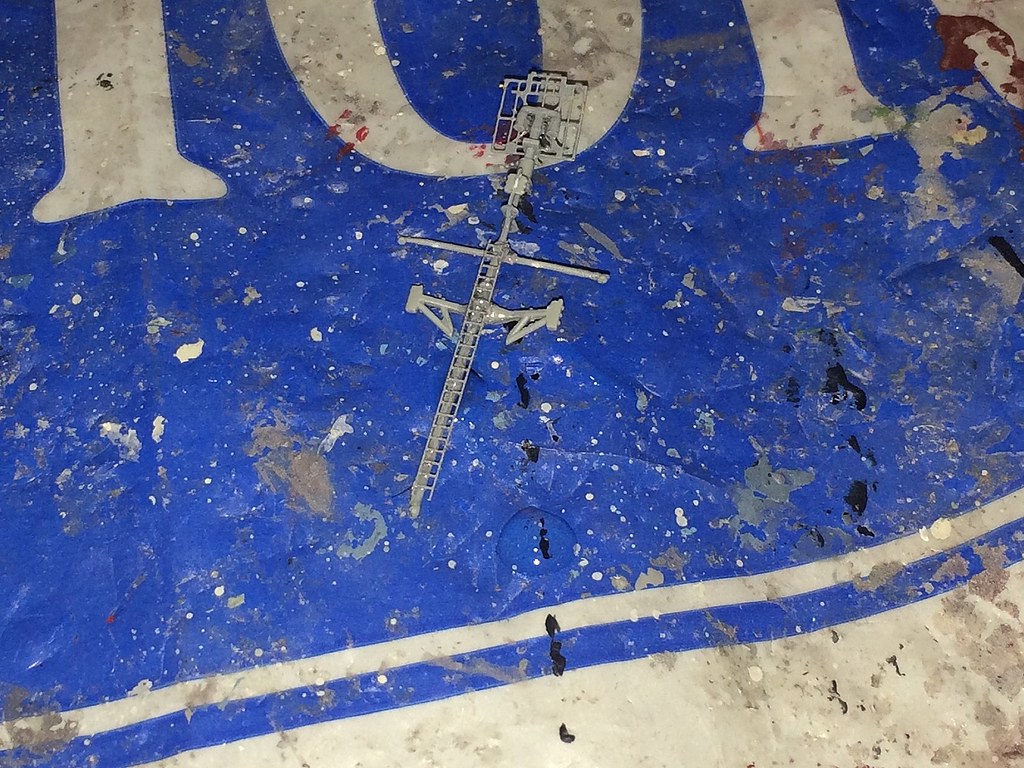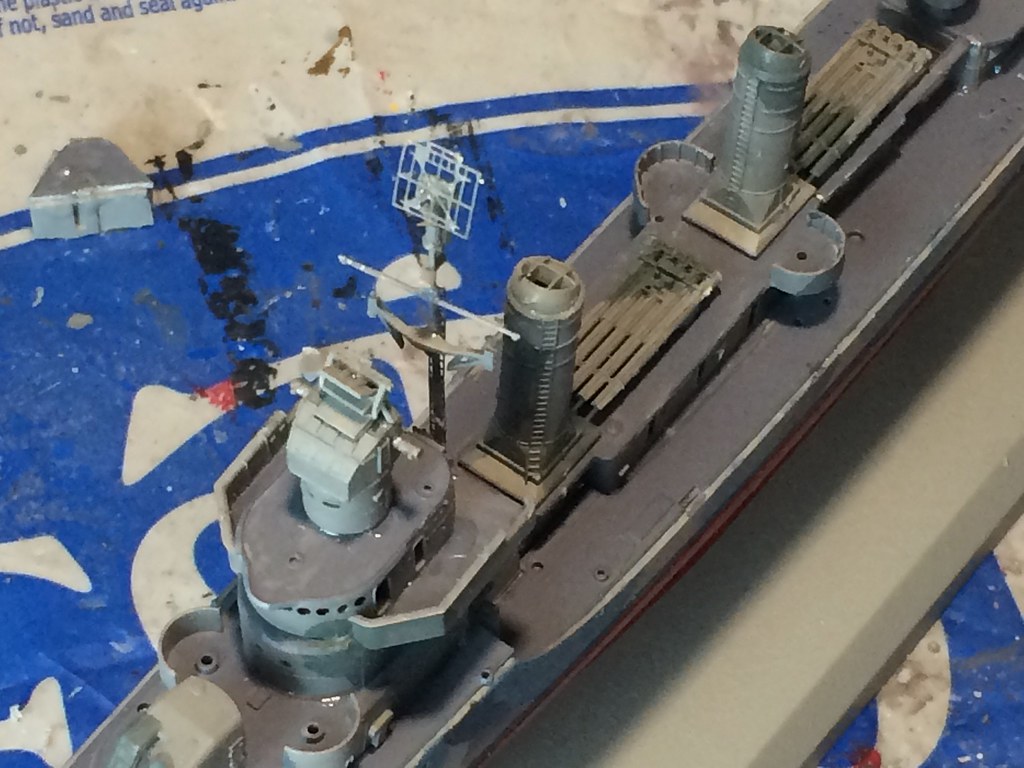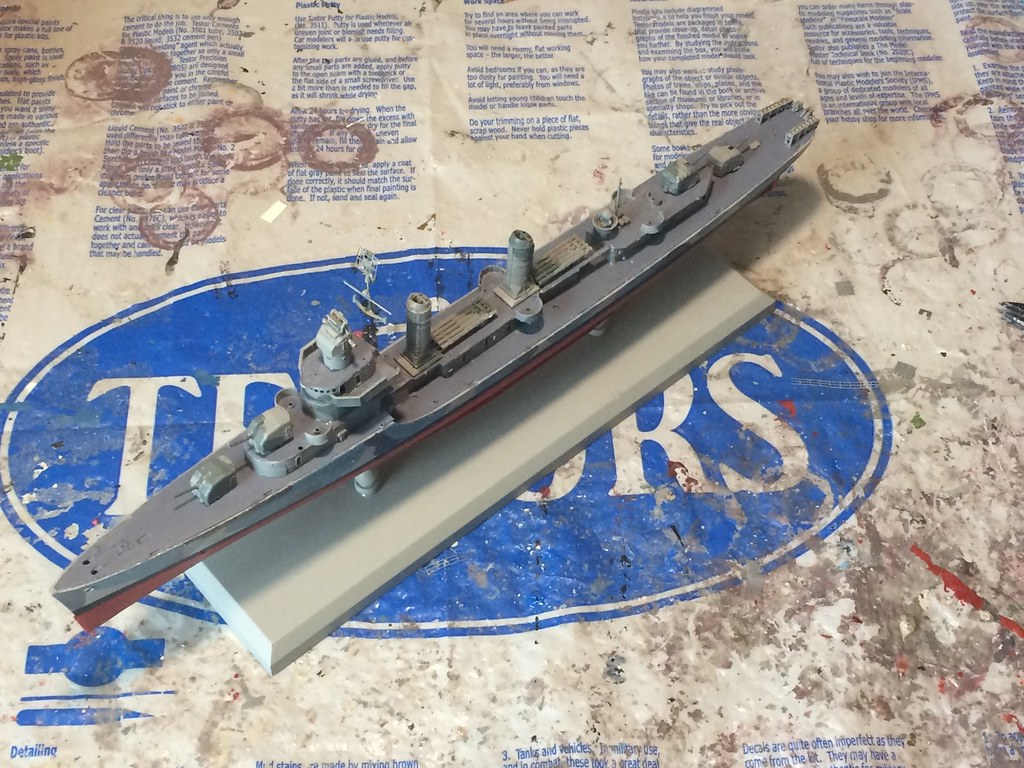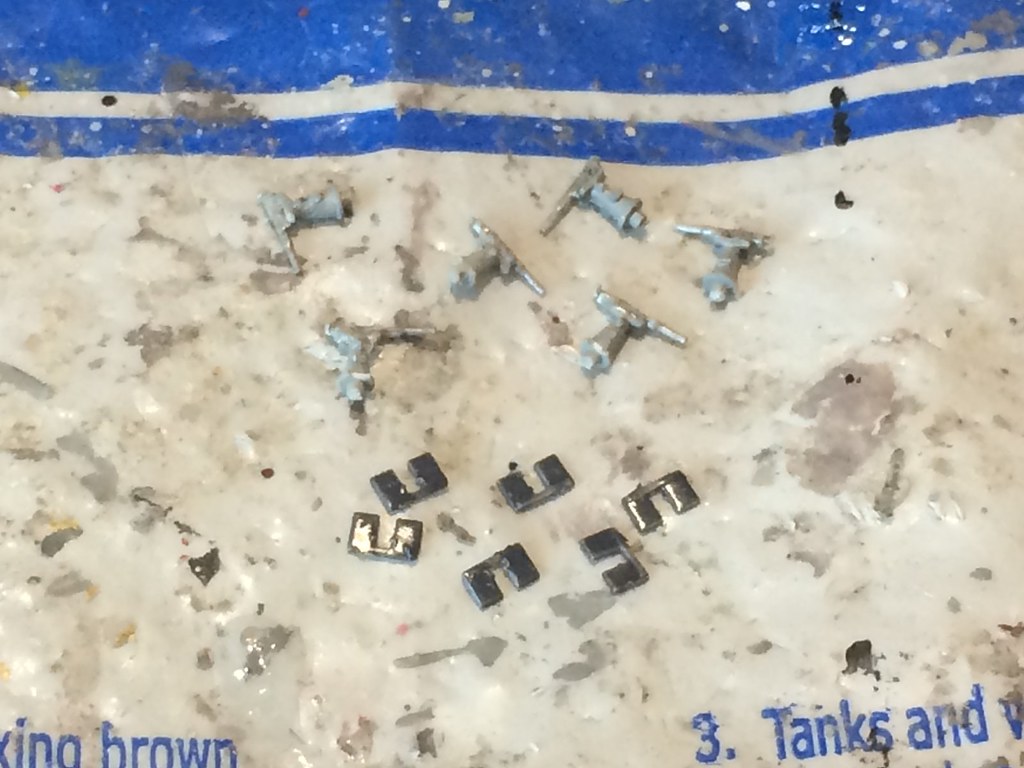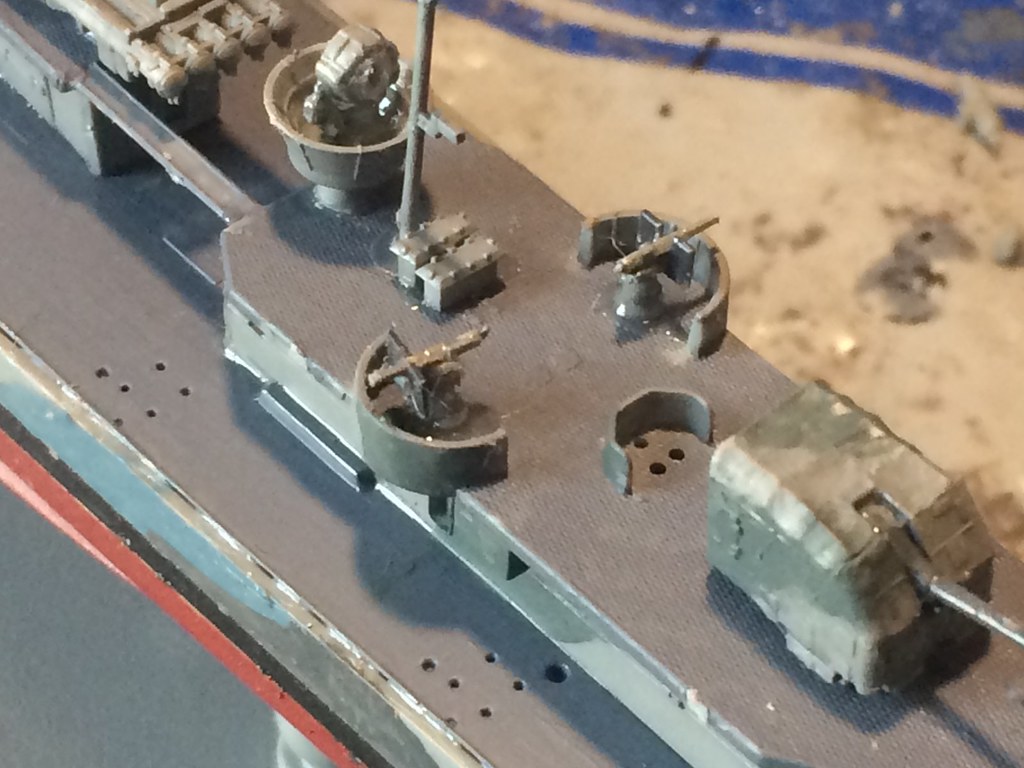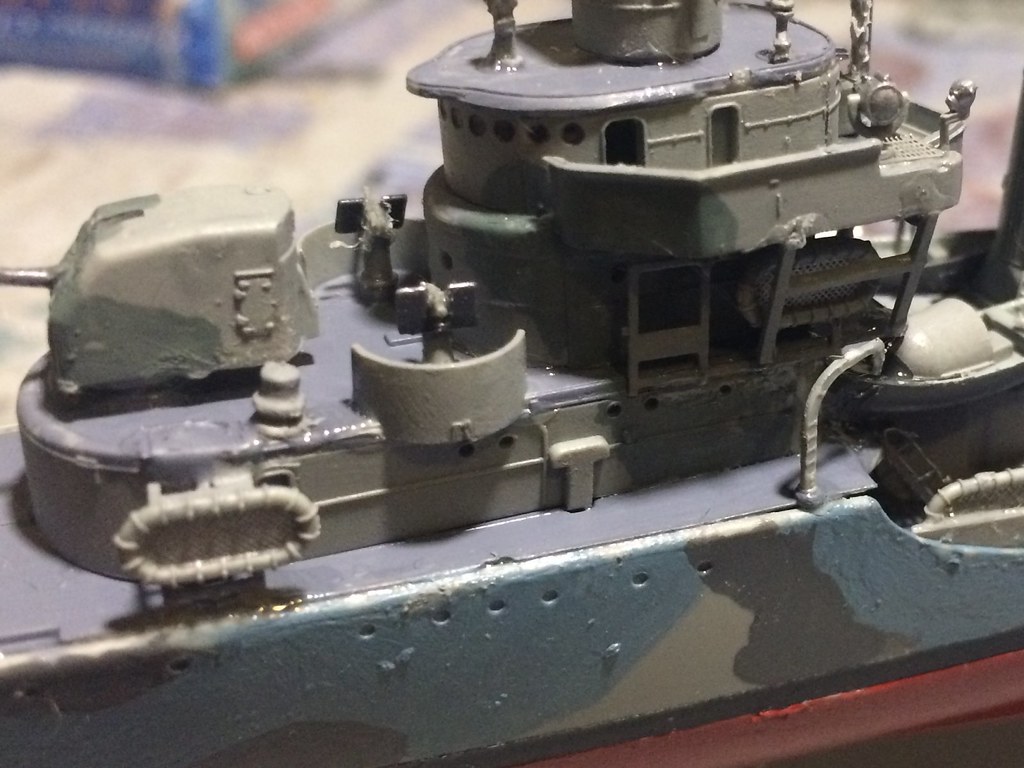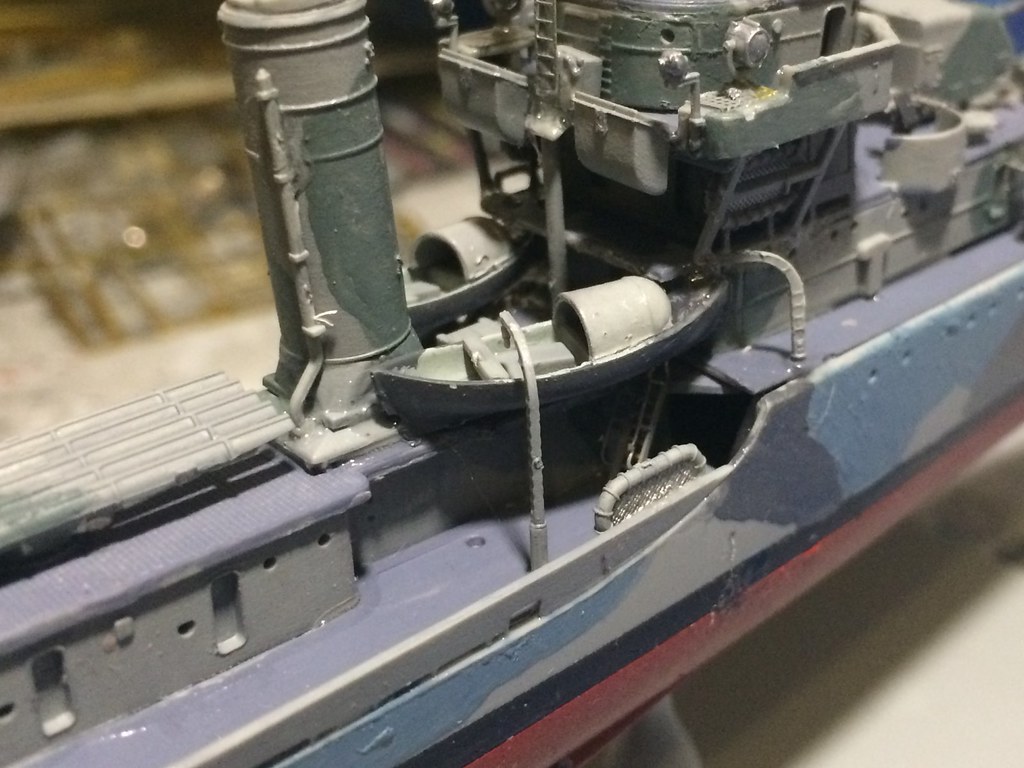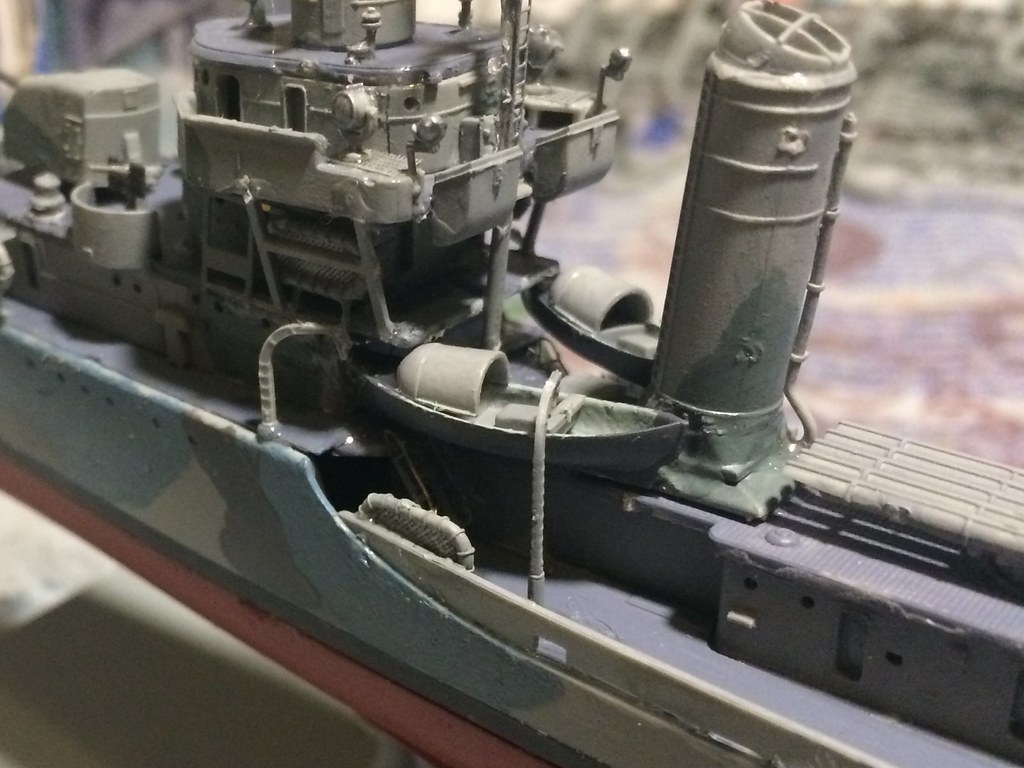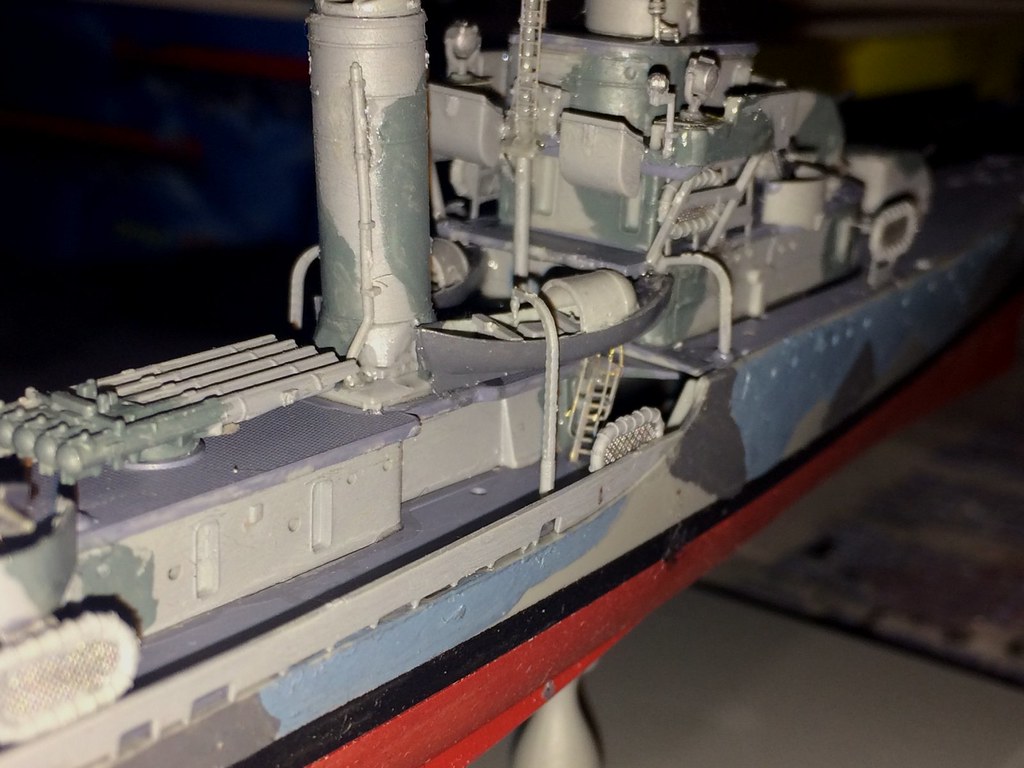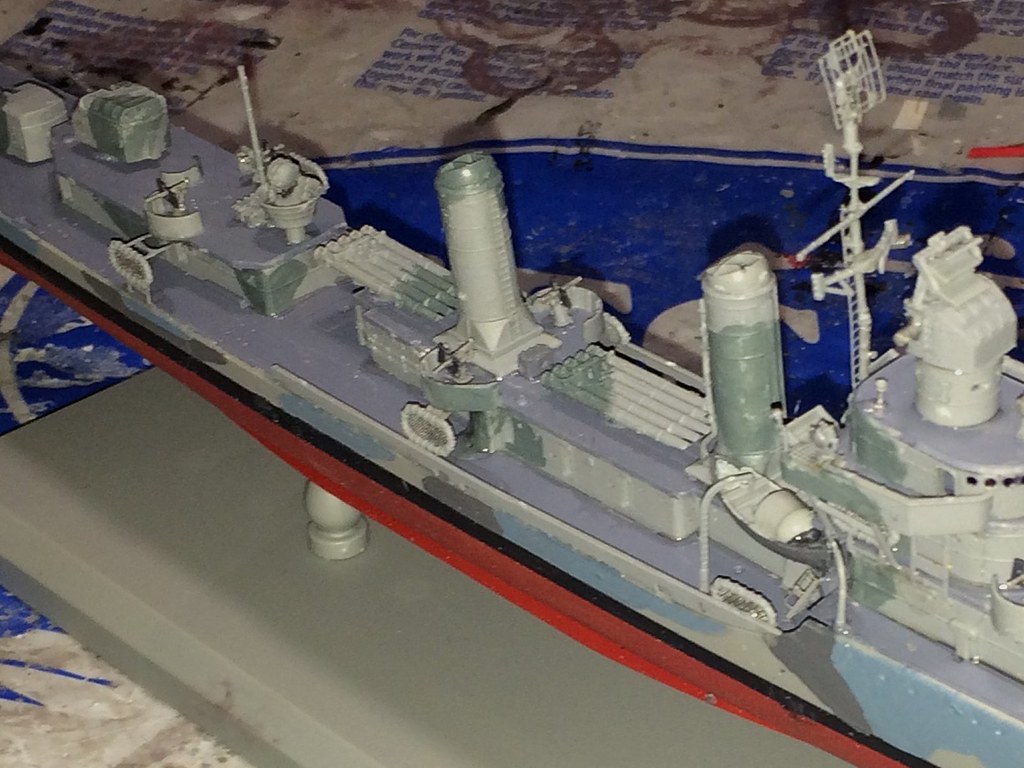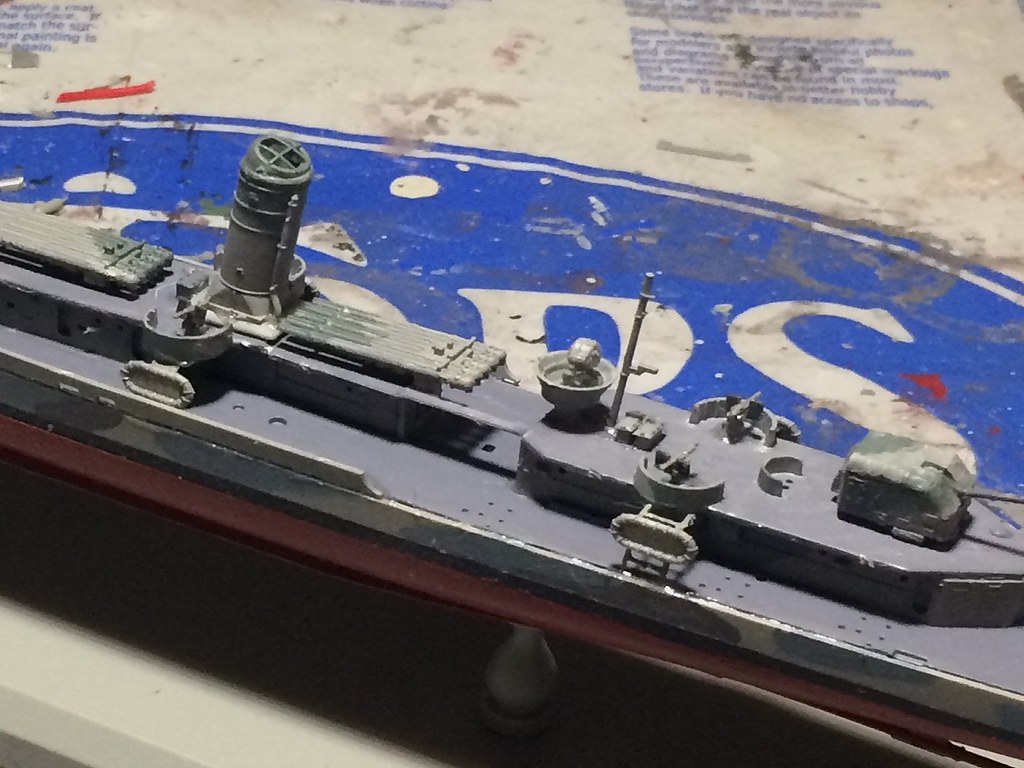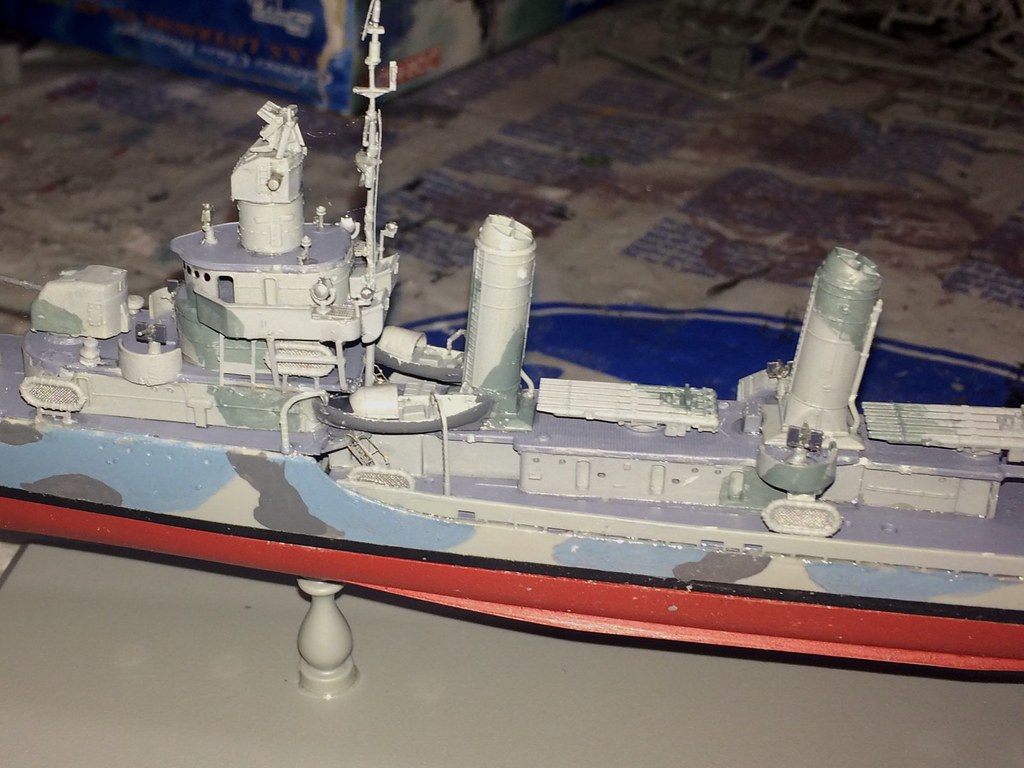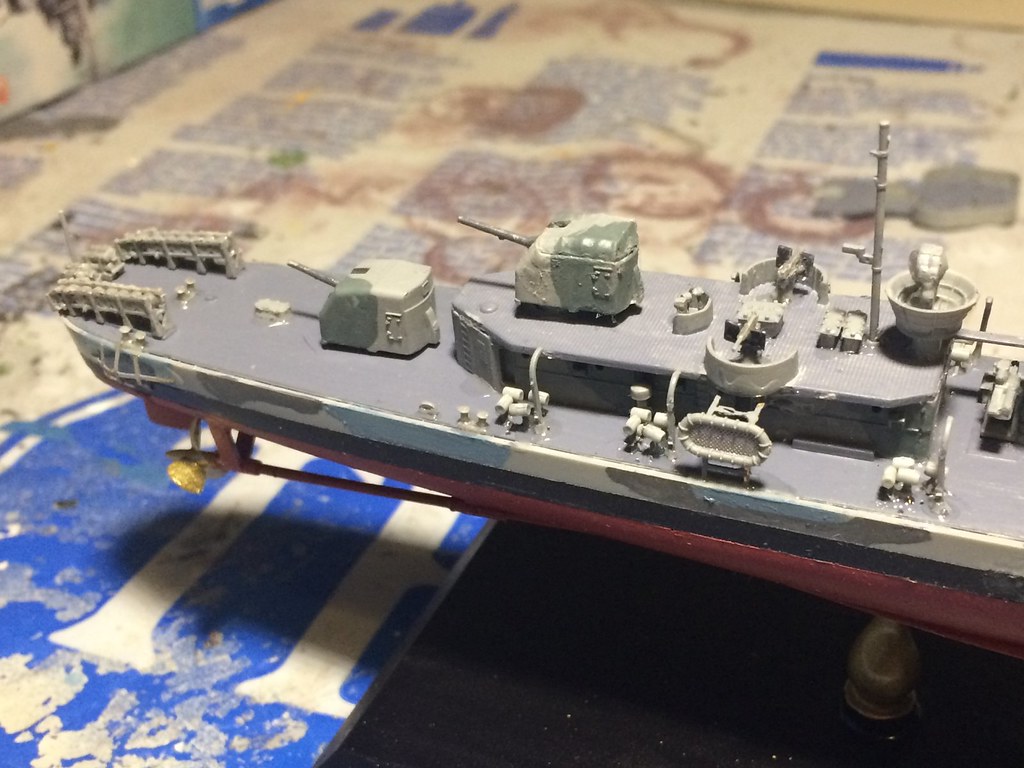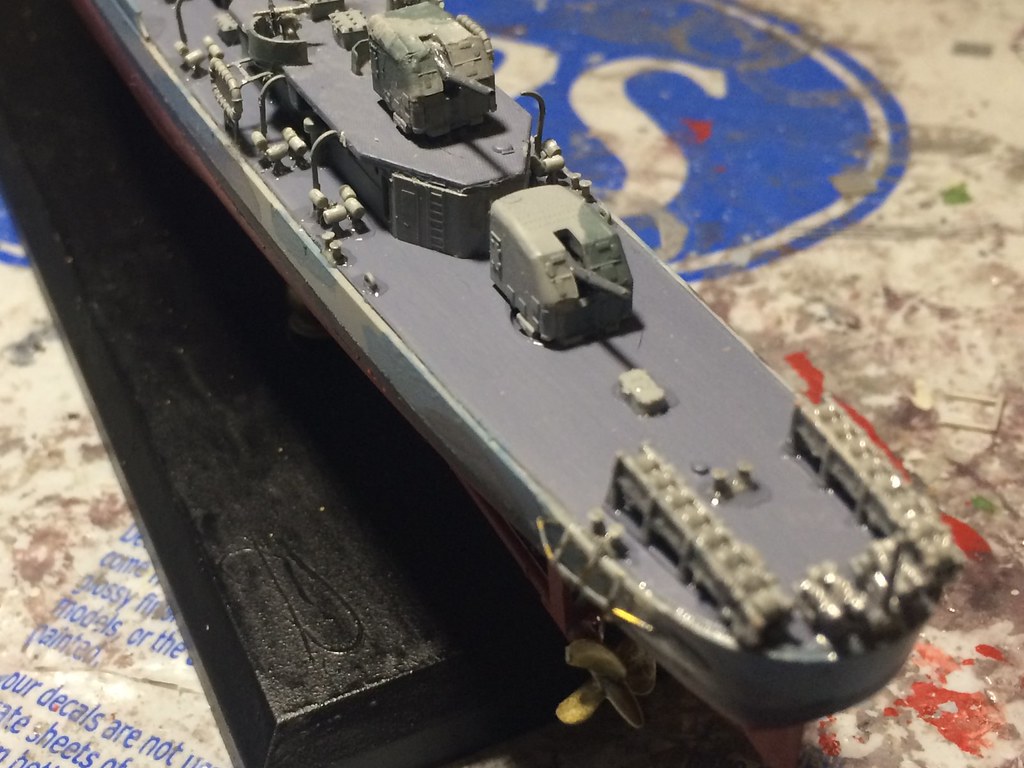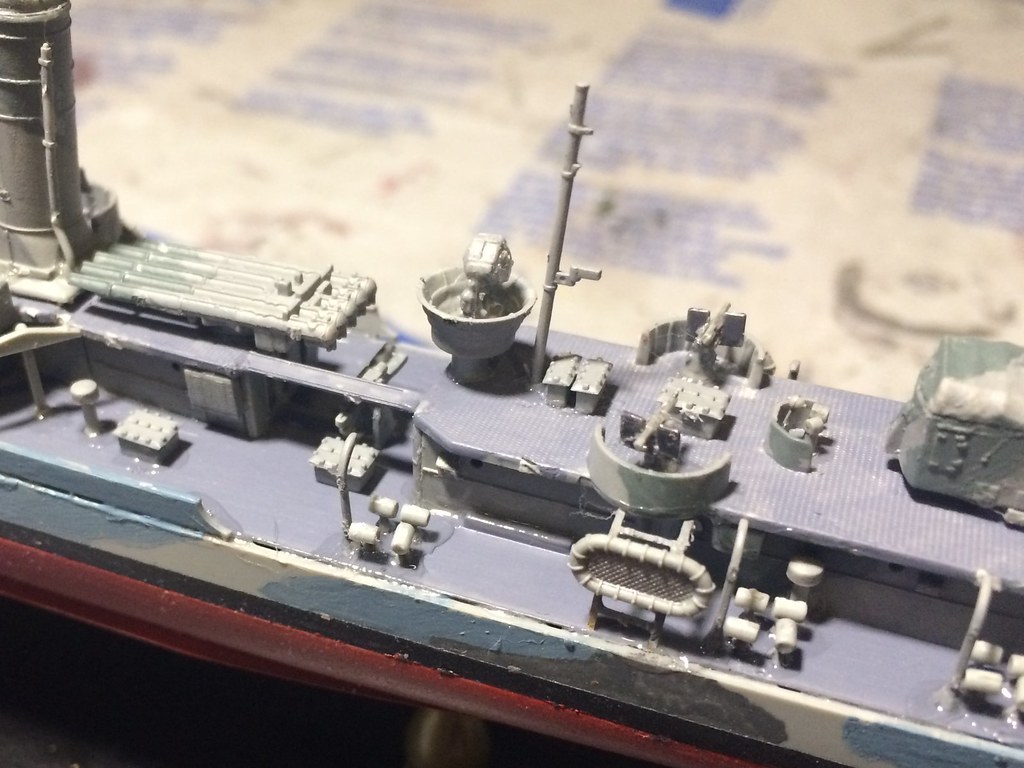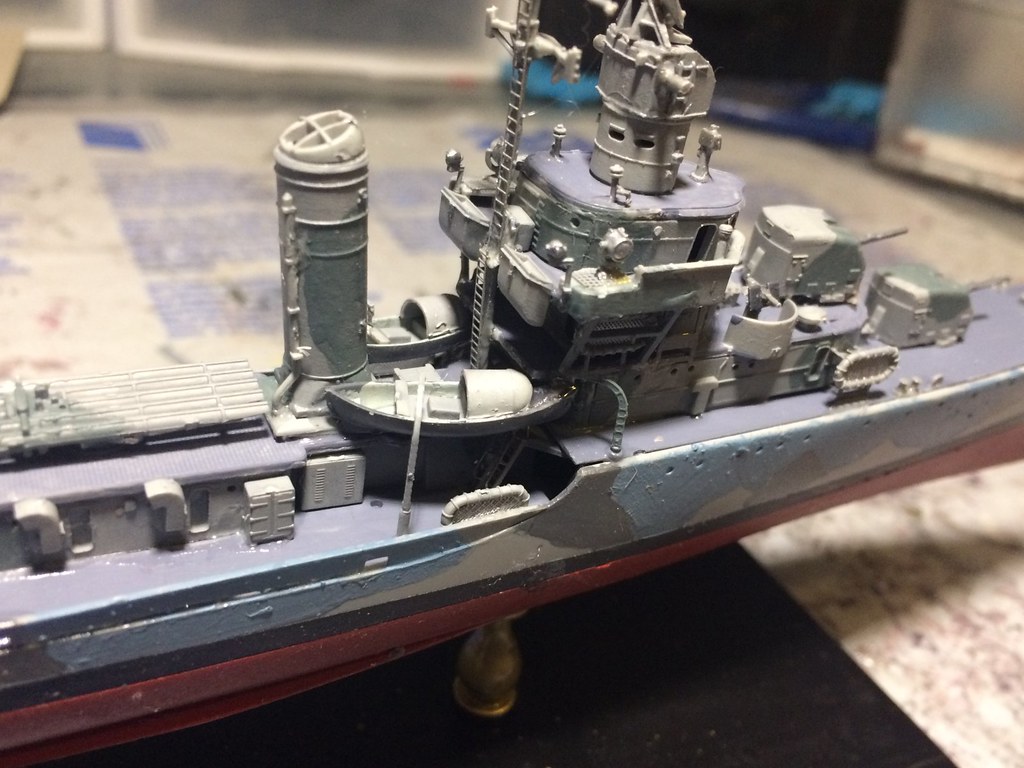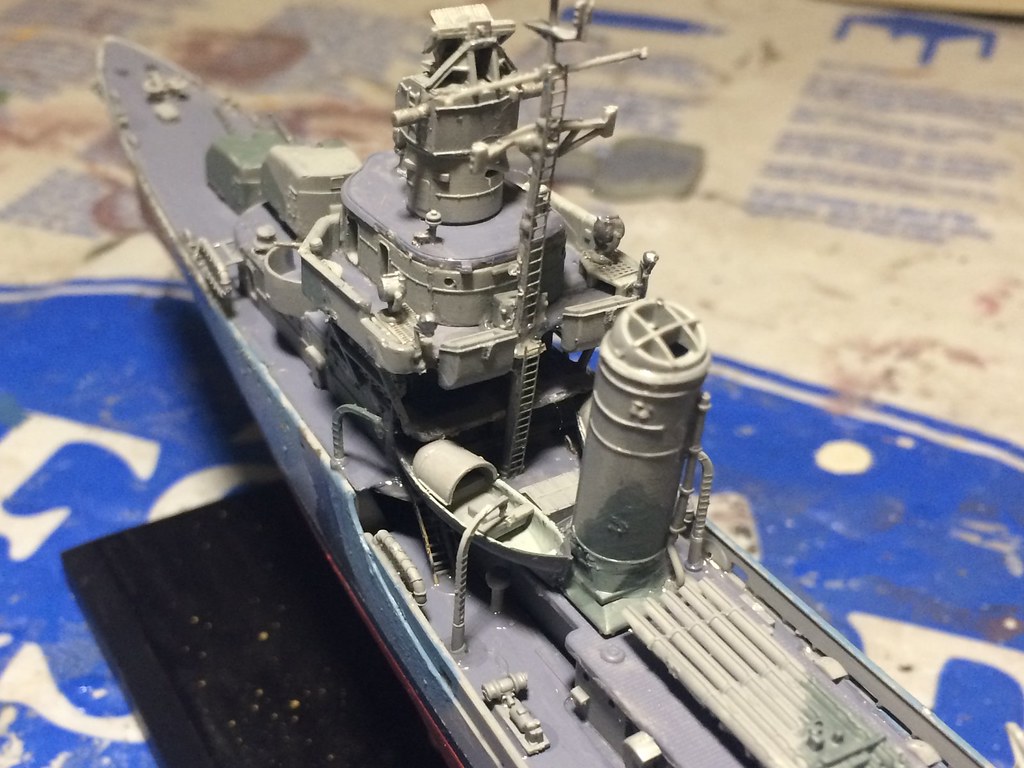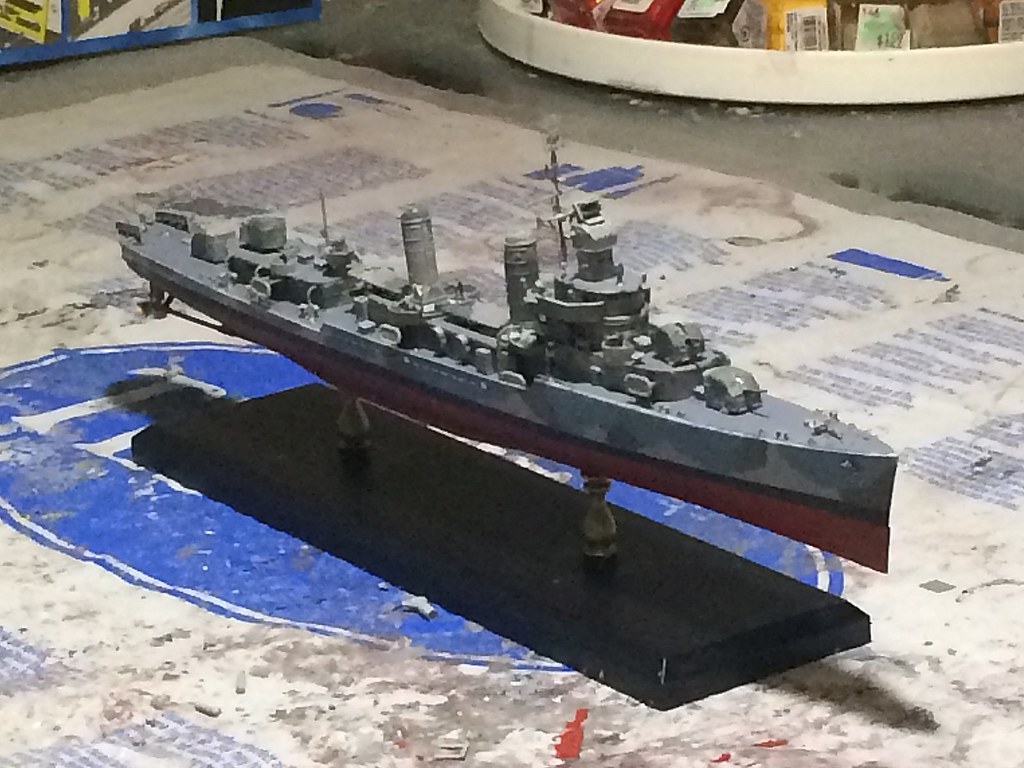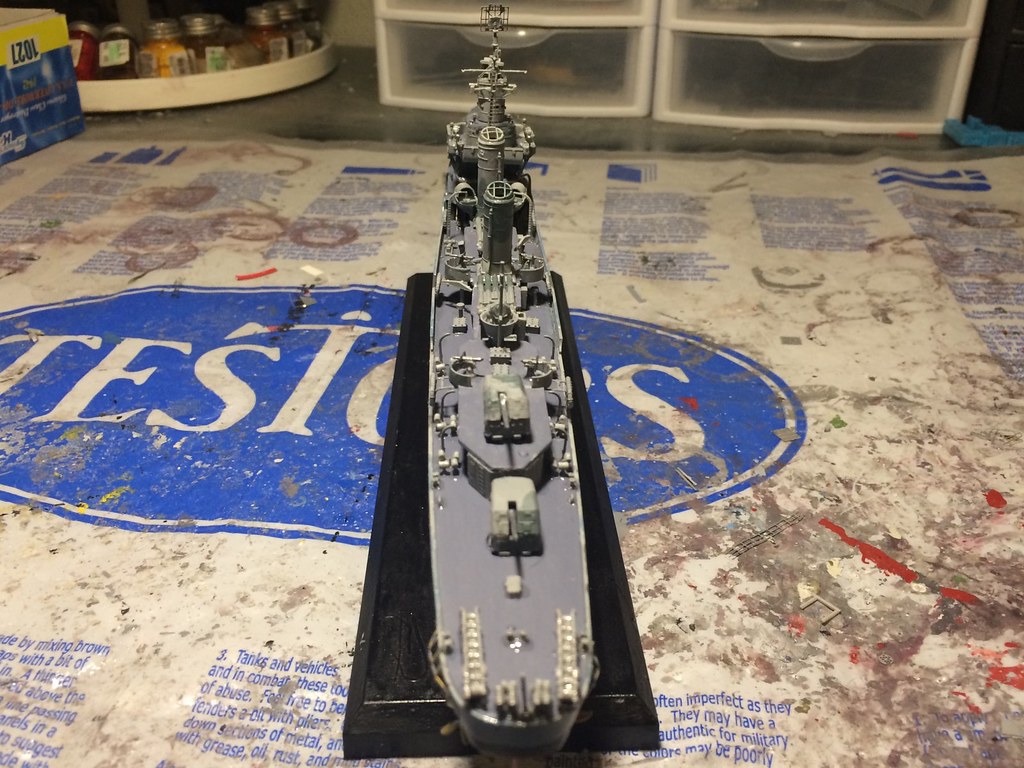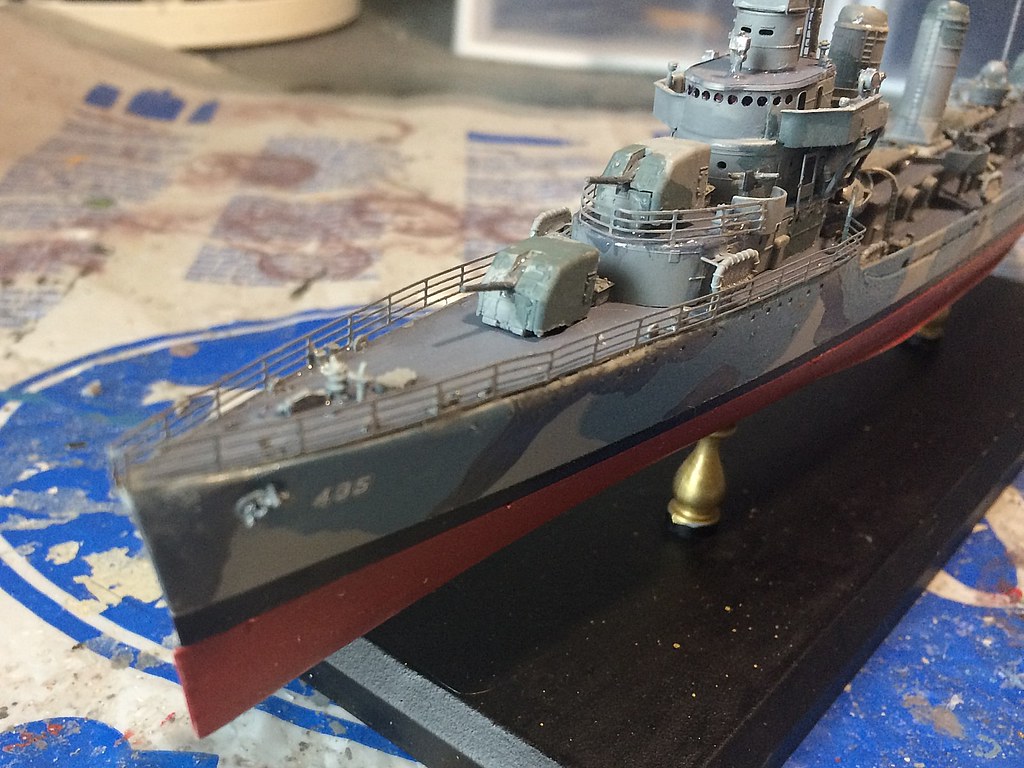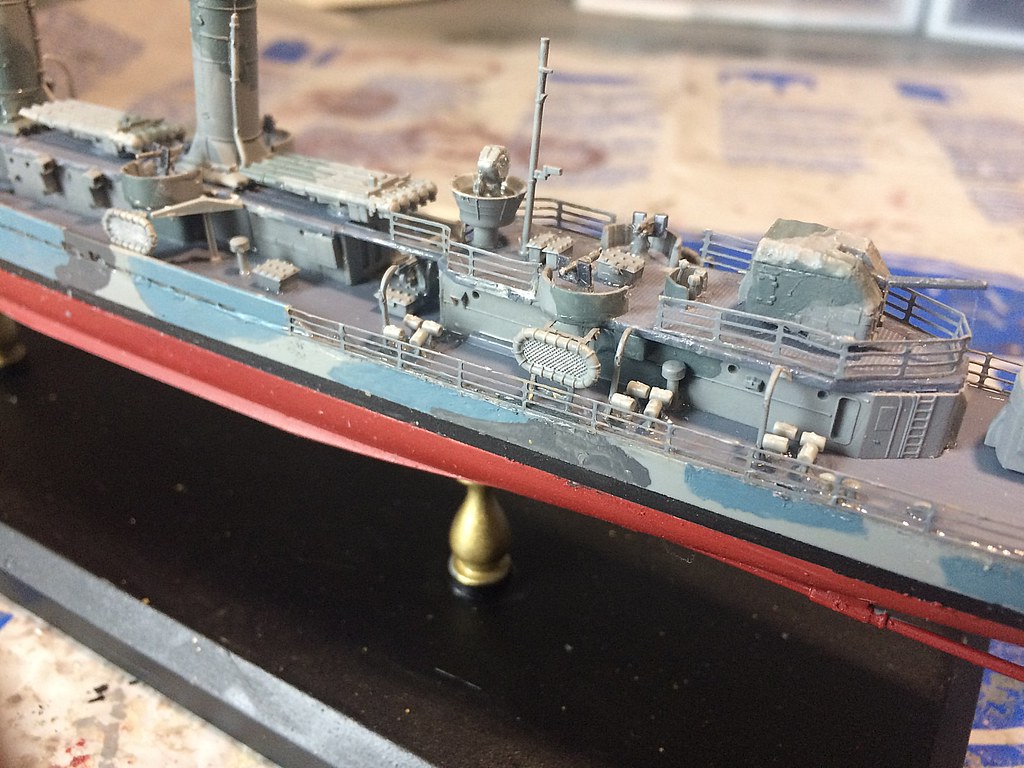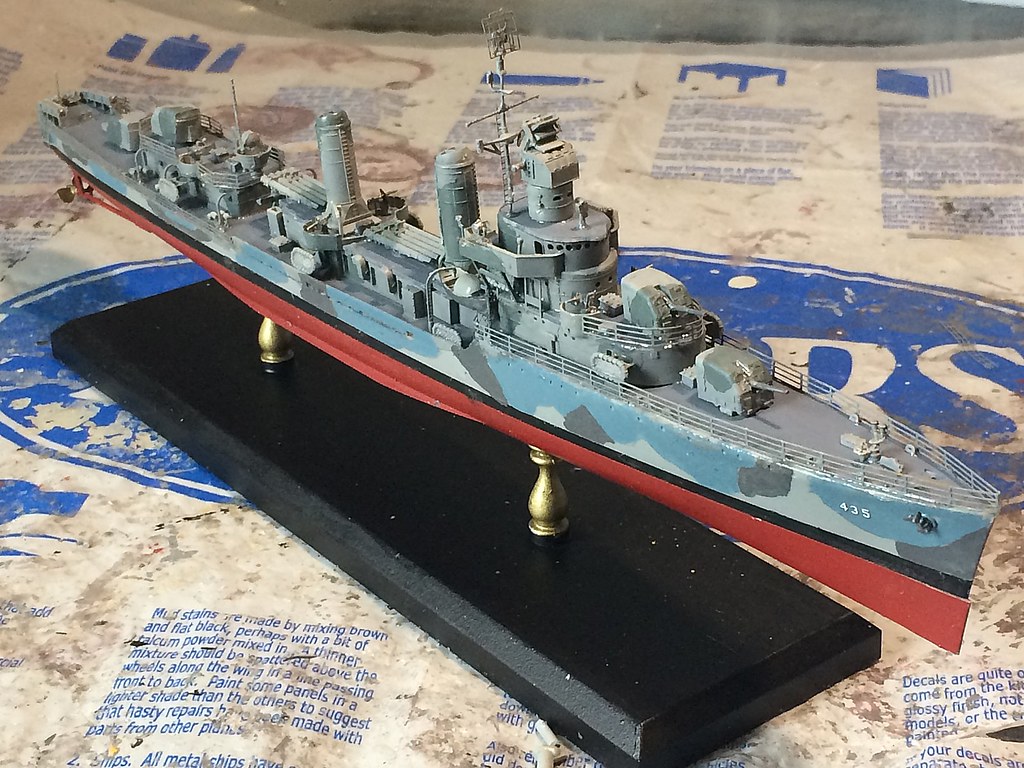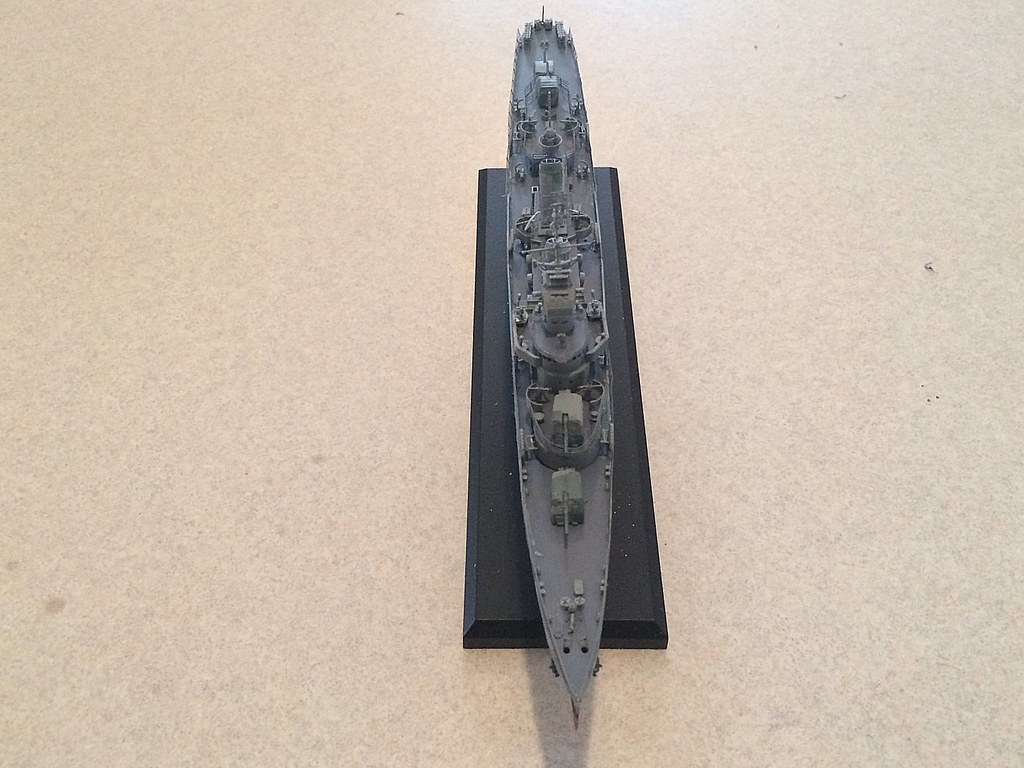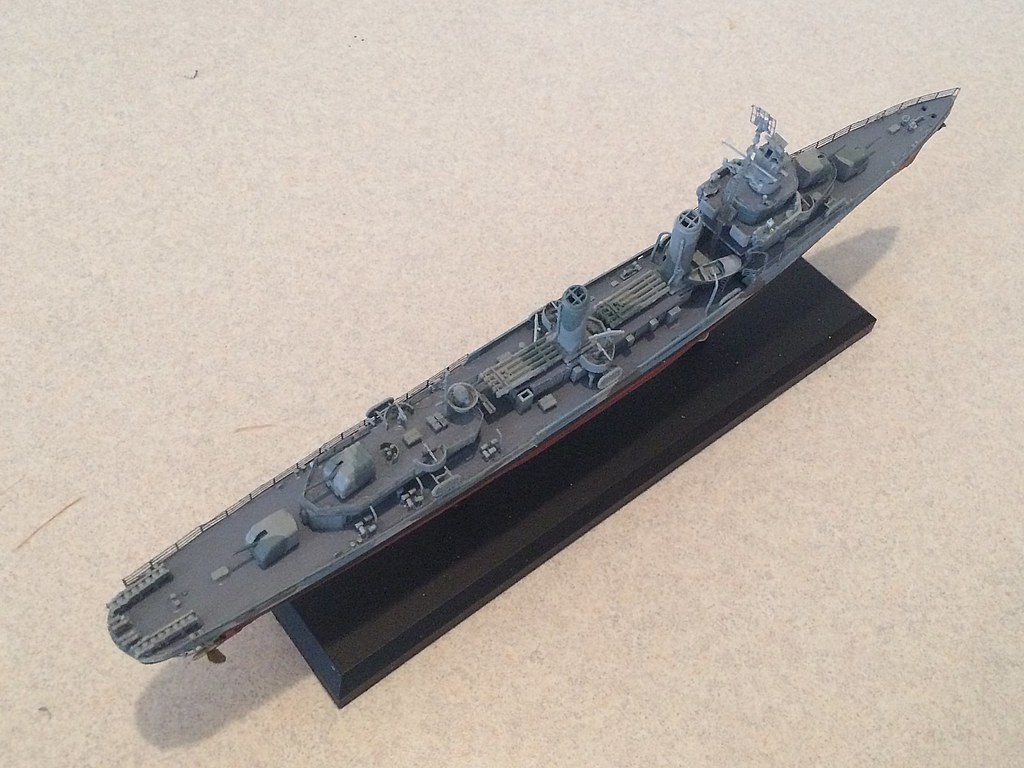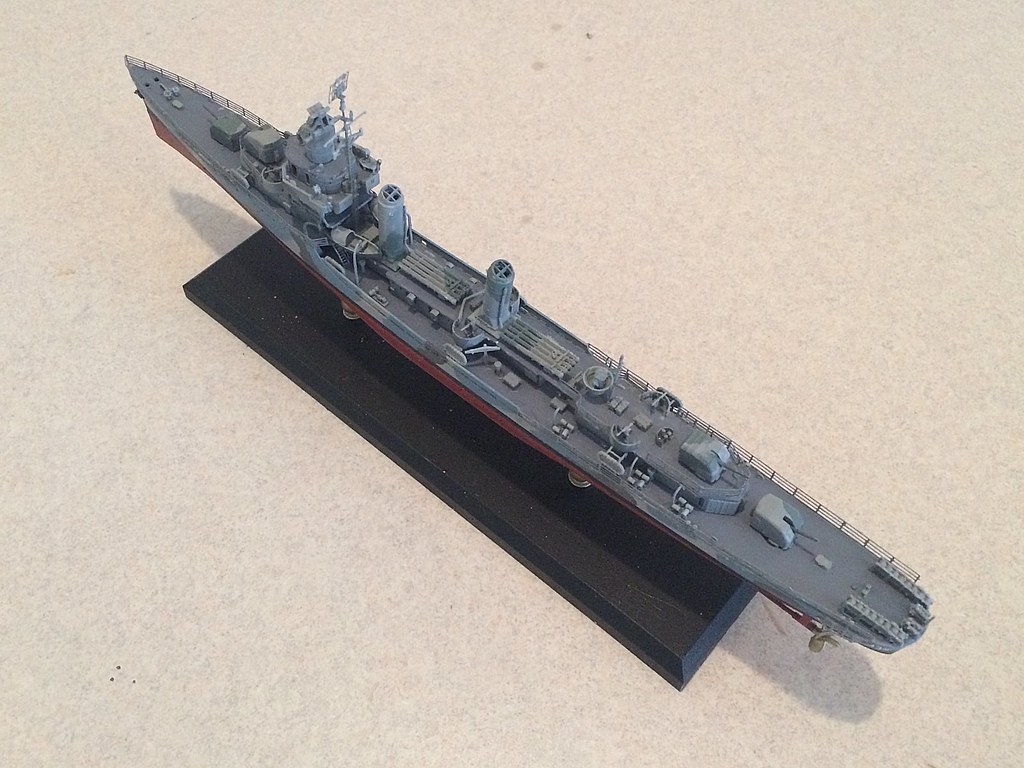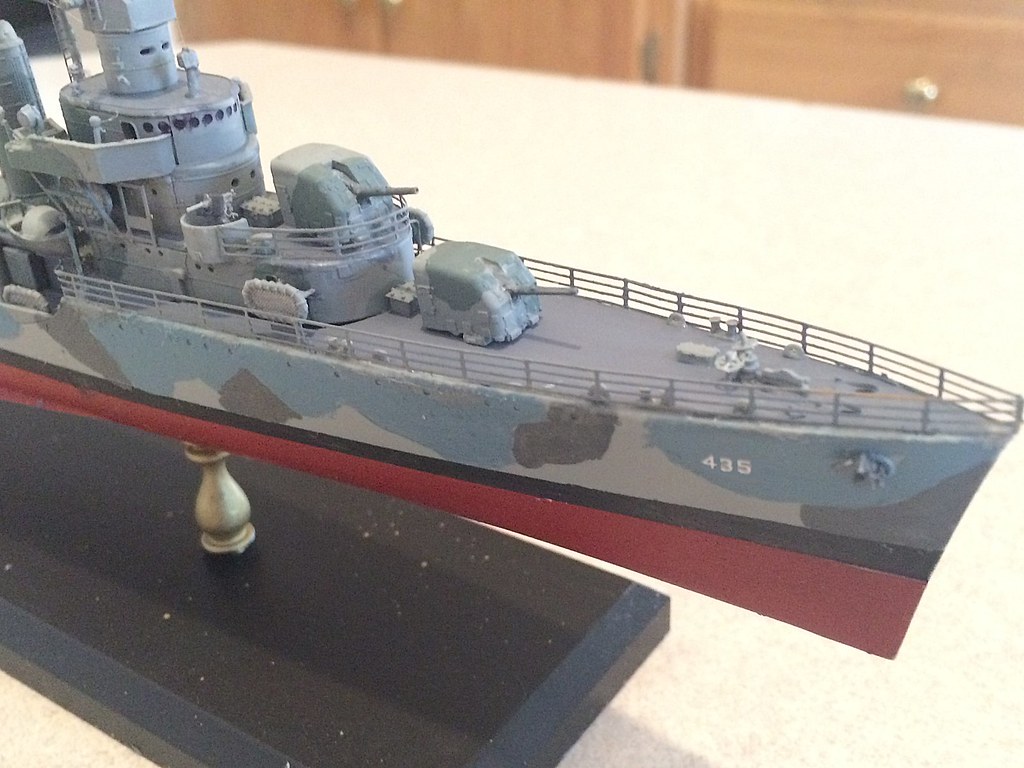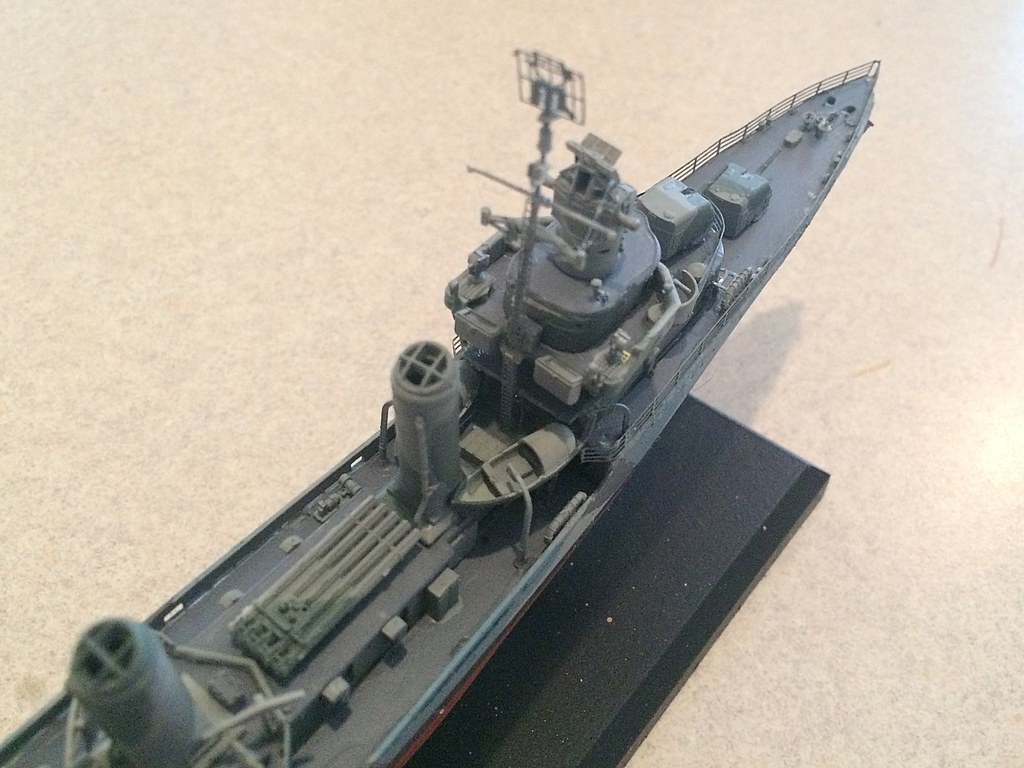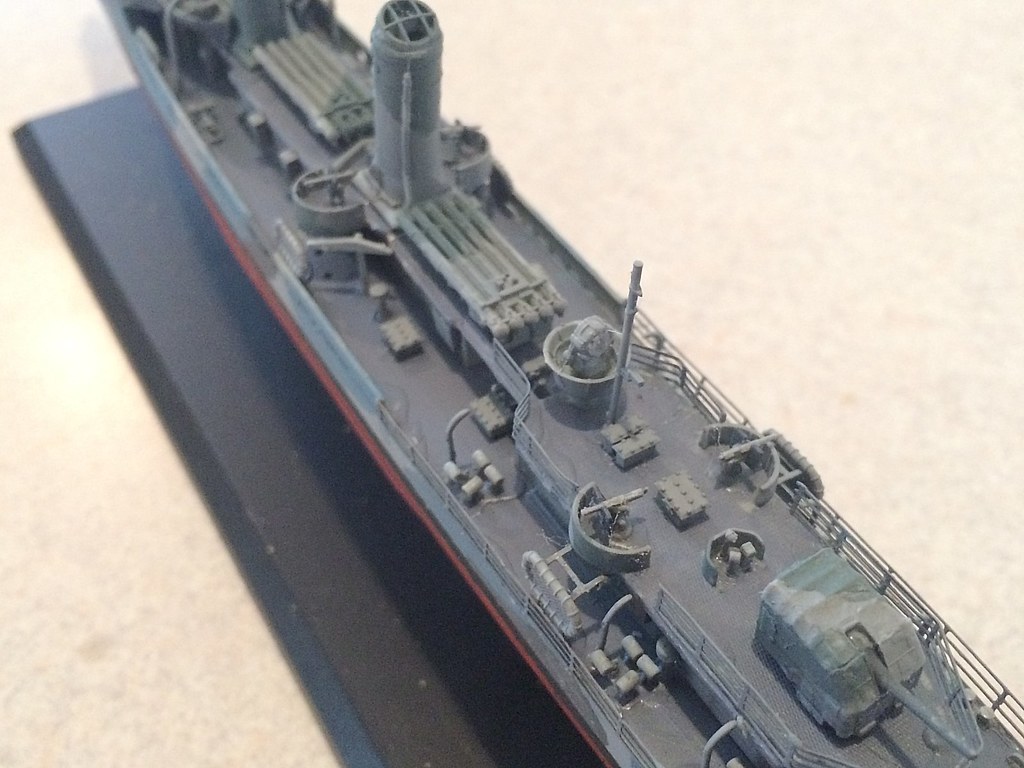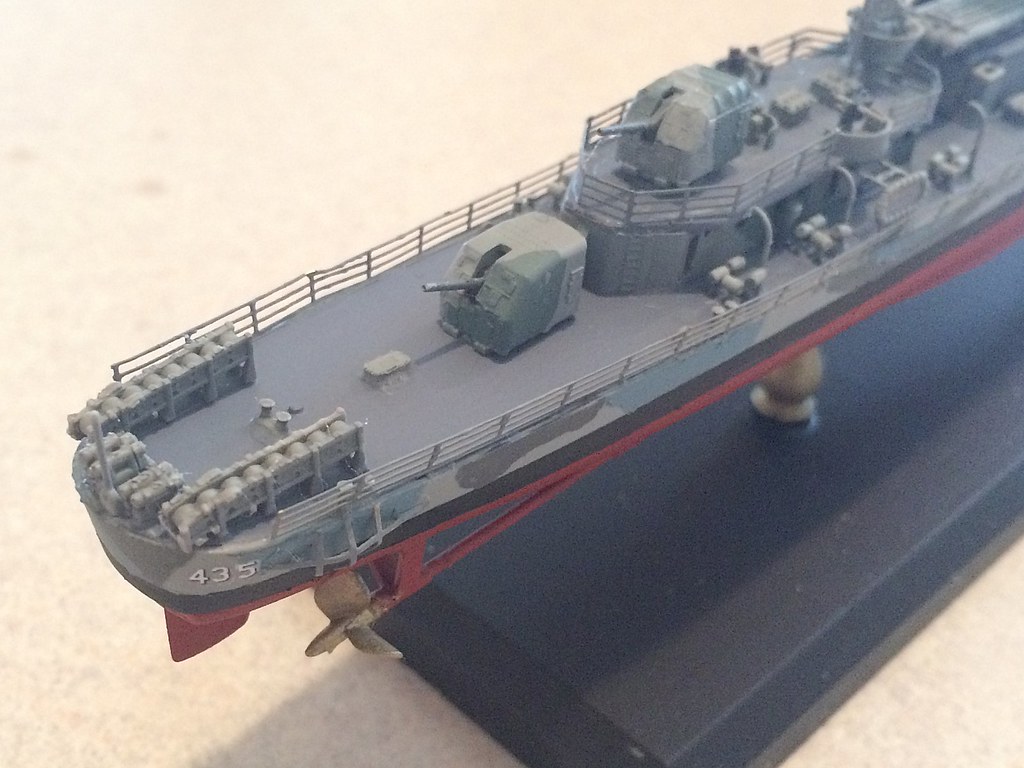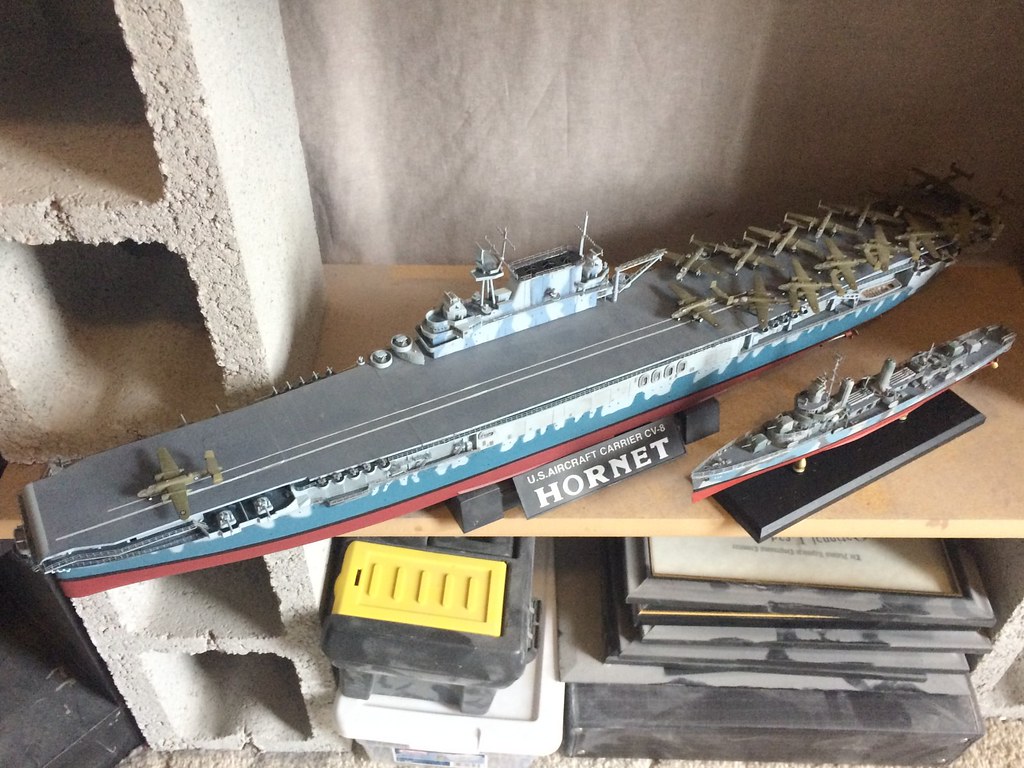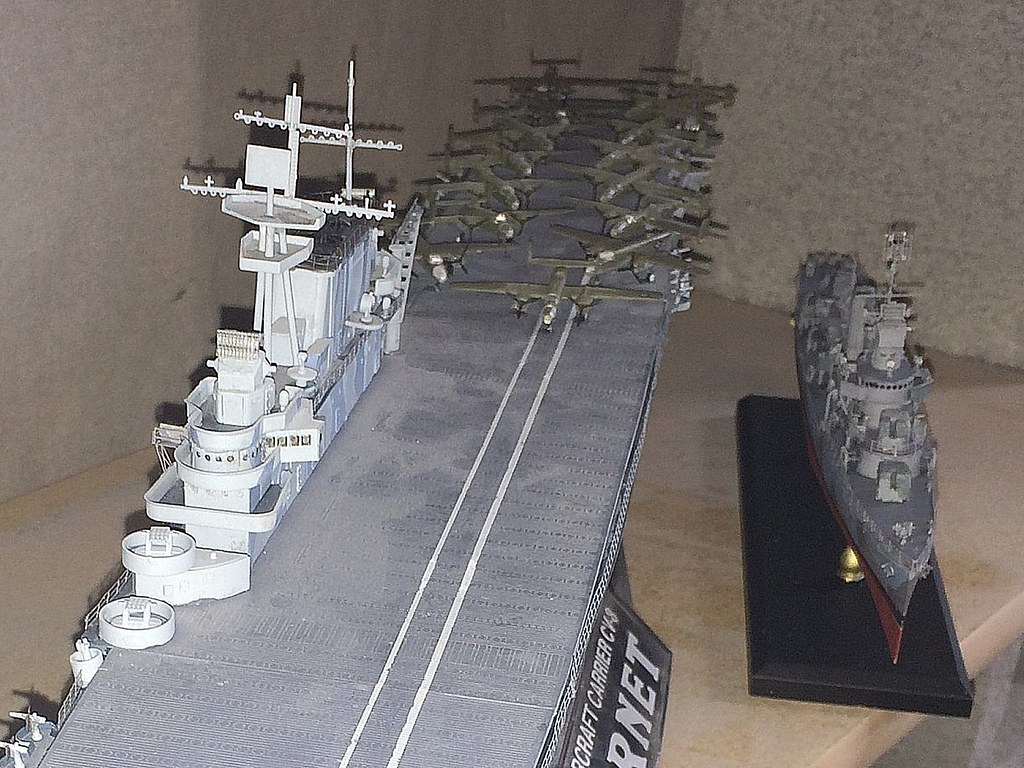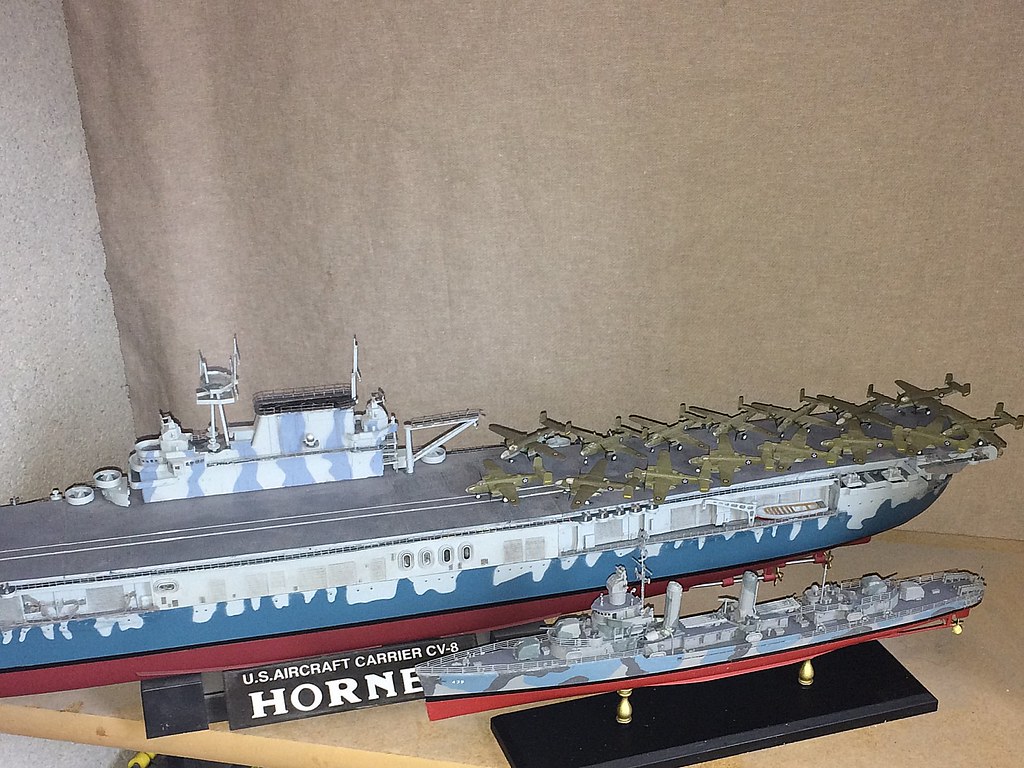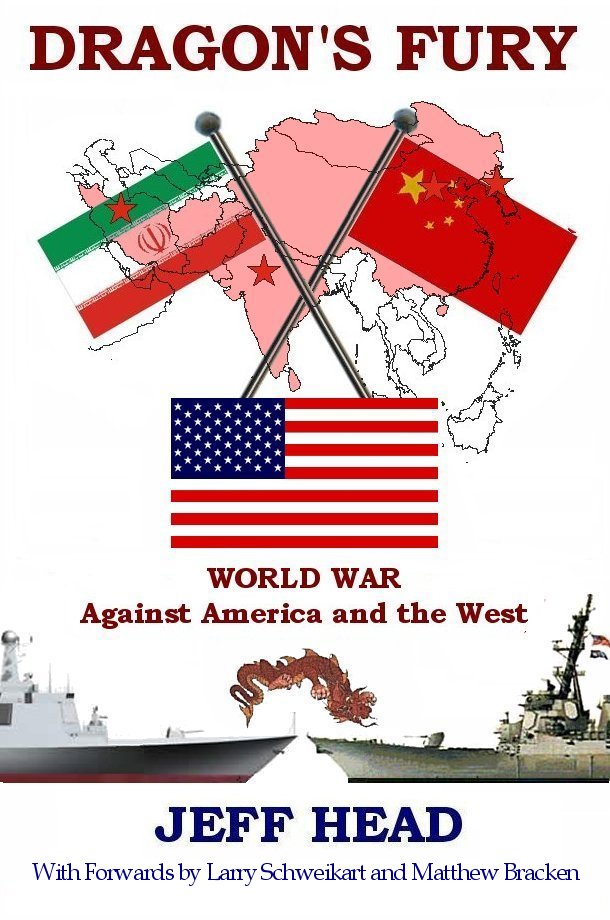 |
|
|
|
Gleaves Class Destroyers The Gleaves-class destroyers were a class of 66 destroyers of the United States Navy built from 1938–42. They were designed by Gibbs & Cox. and these were the main production destroyers of the US Navy when it entered World War II. The succeeded the Benson class of which 30 were built before and into World War II. They were initially meant to be a part of a 24-ship class authorized for 1938–40. Bethlehem Shipbuilding, whichhad been given a contract to build six of these destoyers requested that the six ships designed by them use less complex machinery. Initially, Gleaves and Niblack, although designed by Gibbs & Cox and built by Bath Iron Works, were to follow the earlier Benson design. S,. when BVethlehem started building it temporarily made the USS Livermore the lead ship with more complex machinery and the class was initially called the Livermore class. However, it soon proved possible for Gleaves and Niblack to be built to the Livermore design that Bethlehem was using, and so this allowed Gleaves to be the first in class since it was completed before Livermore and had a lower hull number. Eighteen of these were commissioned in 1940–41. The remaining 48 were authorized in 1940–42 when it became more and more clear that the US was going to be pulled into the war and as the demand to help England with tranpsort duties across the Atlantic continued to rise. During World War II the Benson and Gleaves class destroyers were the backbone of the pre-war Neutrality Patrols and brought the action to the enemy by participating in every major naval campaign of the war around the world.
It was not until the Fletcher class was built that a design had more vessels built. In fact, the larger Fletcher class was authorized in 1941 as the US entered the war and 175 of those destroyers wee built over a three year period at several yards around the country. So, with the Benosn, the Gleaves, and then the Fletcher class, by 19440, the United States had built 272 destroyers and commissioned them and brought them into the War effort.
Displacement: 1,630 tons
USS Grayson, DD-435
I am building this vessel as the USS Grayson, DD-435, even though it was sold as the USS Livermore, DD-429.
Grayson was launched in August 1940 and commissioned in February 1941. Before the US officaillt entered the war, and immediately thereafter, Grayson was involved with escorting convoys across the Atlantic to England.
I chose to build this model as the USS Grayson because it was one of four Gleaves class destroyers that served with the USS Hornet, CV-8 (TF-18), and USS Enterprise, CV-6 (TF-16), during the early days of the war and in the first major offensive strike at Japan, during the Doolittle Raid on Japan in April 1942. These are the four Gleaves class that accompanied the raid:
USS Gwin, DD-433
...all but Grayson were sunk before the war ended and only Grayson survived the war.
After ten months patrolling and protecting convoys in the icy North Atlantic, Grayson was ordered to the Pacific to join an American fleet battered after Pearl Harbor and around the Philippines, but resolutely carrying the war to the enemy. As stated, ssailed from San Diego on 2 April 1942 as part of aircraft carrier Hornet's escort and rendezvoused at sea 13 April with Enterprise under Admiral William F. Halsey, Jr. From this fast carrier force, steaming less than 800 miles from the Japanese home islands, General Jimmy Doolittle launched his B-25 raid.
The task group sailed into Pearl Harbor on 25 April. Grayson departed almost immediately for repairs in California, but soon returned to the Pacific war.
Guadalcanal
with the Enterprise damaged, the task group dispersed, Enterprise returning to Pearl Harbor for repairs, and Grayson joined Task Force 11, built around Saratoga under Admiral Frank Jack Fletcher. Action soon followed. Sighting a Japanese submarine on the surface on August 25th, Grayson closed for the kill. After expending 46 depth charges in a series of five attacks, the destroyer saw a huge air bubble and oil slick rise to the surface indicating that they had sunk an Imperial submarine.
The battle-proven destroyer and crew remained in the bitterly contested waters around Guadalcanal for nearly eight months in a variety of duties. During that time, many of her sisters were sunk. Grayson convoyed troop transports loaded with reinforcements from Nouméa and other staging areas to Guadalcanal, patrolled in "The Slot", served as a radar picket ship, and performed valuable rescue work. On 18 October she picked up 75 survivors from her sister Gleaves destroyer, USS Meredith, which had been sunk by aerial torpedo on 16 October, and helped escort the barge Vireo, loaded with needed fuel and ammunition, to Guadalcanal.
Kolombangara
1944
On September 1, 1944 Grayson joined TG 38, for carrier strikes against the enemy in the Palau Islands, scene of the next major invasion. She returned to Seeadler Harbor on September 30th an then sailed on October 2nd for a major strike against Okinawa and the Philippines. Japanese planes harassed the withdrawal, and o October 15th Grayson rescued 194 men from the torpedoed light cruiser Houston, who was towed safely to Ulithi.
Prom Ulithi, Grayson sailed straight to Saipan, where on November 3rd she took up radar picket and lifeguard duty. Finally Grayson was ordered home, reaching Seattle June 9, 1945 for her first real rest since the war began.
End of World War II and fate
Thereafter, Grayson remained at Charleston until decommissioned, February 4, 1947, and was placed in reserve.
She remained in reserve for many years and was finally struck from the Naval Vessel Register on 1972 and sold in June 1974 for scrap.
For her services in world Wr II, Grayson received 13 battle stars.
Introduction and What's in the Box - February 27, 2016
This Dragon kit is one of their Modern Sea Power Smart Kits. Tt comes with many detailed and small plastic parts which have been very finely molded.
The kit has 13 plastic sprues and 2 Phot etch Sprues. The photo etch contains many detail parts for sensors, ladders, equipment, ladders...but no railing. I used a set of Tom's MOdels 1/350 scale railing to put railing on the ship.
The ship also comes with six crew members...but I did not paint or use them, thugh tey are very decent 3D pieces.
There are almost 300 parts altogether, and they go together nicely for such a small vessel.
Many, many fine details. One will have to be patient with these parts in orde to put the vessel together properly, but it looks like it will make a very nice kit.
The instructions are very well done on eight pages, two of which make for a good, color layout of the paint scheme.
The decals are well done too, though I did not use the pathway markings. For one, they are relatively dark gray and were hard to see with the deck coloring.
The hull can be built as a waterline model of you wish, though I chose to build the kit with the full hull.
All in all, this is a very good Dragon model and it really compares well to similar Trumpeter models for the amount of detail.
I would recommend these "Smart MOdels" to anyone wanting a very decent build.
Here's how the kit looked out of the box:
The Build - Hull, props, and main decks - March 1, 2017
I started off by painting the hull, tand the vertical surfaces in neutral gray before adding the came, and the decks in a flat dark gray.
I then built the hull, added the props, and then added the main forward and at decks.
Here's how that all went:
The Build - Main Deck houses, funnels, and main armament - March 2, 2017
Next I built the main deck houses. There are thee of these. The forward gun mount and bridge, a central deck house where the funnels and the torpedo luanchers along with one of the .50 caliber sections, and then an aft deck house for the another .50 caliber section and the after gun mounts.
I also then painted the cam scheme, using a Ocen Blue Gray that I mixed, a Ryal Naval Gray, which is dark for the upper surfaces, and a darker gray for the darker color on the hull.
I then built the funnels and attached them, and then built the four 5" guns and tow torpedoe launchers, each mounting five torpedoes.
Here's how all of that went:
The Build - Main Mast, .50 cal MGs, LIfe Boats, Life Rafts - March 4, 2017
At this point I was ready to build the main mast. I used some of the Pht Etch here and the prts here are very fine and much care has to be taken not to bend or break them, including the mast and cross arms.
I then similarly had to exhibit care with the very small .50 cal machine gun assembles. There are six of them and they are tiny...but very well modled.
Finally I bilt the Life boat and life raft assemblies and placed them, having to place the photo etch addes to the mid ships area because they are underneat the life boats and davits.
The ship is looking ver nice at this point.
The Build - Depth Charges, deck details, railings - March 5, 2017
At this point I built the depth charge and anti-submarine warfare equipment as well as the MANY deck details and equipment all around the vessel.
When that was completed I then added the railing to the vessel and the decals.
This completed the vessel, but was time consuming because so many of these parts are very small and needed to be carefully attached:
The Build - Final touch up paint, clear dull coat, and completing the model - March 5, 2017
At this point I went around the model and touched up some of the areas that needed final touch up as a result of the building that went on around them after they had been painted and installed.
I then added two coats of dull coat clear paint. This allows the finish that is more glossy from the glue to be rendered dull like the rest of the model so that it all blends in well together.
After theis, the vessel was completed and ready to show off in its final pictures:
And some close ups:
...and finally a couple of shots with the Grayson and the Hornet together:
The completion of the PLAN Carrier group was centered on the already completed Trumpeter's 1/350 scale PLA Navy's Aircraft Carrier CV-16, Liaoning, (in addition to the other escorts already completed) included Mini Hobby's PLAN Guangzhou, DDG-168. I recently pre-ordered a 1/350 scale model of the PLAN Type 071 LPD, Yuzhao Class, announced by Dragon and due out in October, 2013. I will end up adding two of those, probably LPD-998 Yuzhao and LPD-999, Jinggangshan, add the PLAN- DDG-139, Ningbo, and the PLAN DDG-115, Shenyang, along with the PLAN Weifang, FFG-550 and thus build a PLAN ARG.
The completion of the US Carrier Strike group was centered on the completed Tamyia's 1/350 scale USS Enterprise, CVN-65, (in addition to the other escorts already completed) included Dragon's, USS Freedom, LCS-1, Dragon's USS Preble, DDG-88 and Hobby Boss's USS Texas, SSN-775. When a 1/350 scale USS Enterprise, CVN-80 (or any Gerald R. Ford Class) is released from Dragon, Tamiya, Dragon, or whomever else, I will add it to this group along with another AEGIS Cruiser. Whichever Ford Class coms out in 1/350 scale, I will build it as the USS Enterprise, CVN-80.
The US ARG includes Tamiya's 1/350 scale, USS Iowa, BB-62 (which I have already completed), Gallery's 1/350 scale USS Iwo Jima LHD-7, Gallery's 1/350 scale (already completed), USS New York, LPD-21 (Completed), Cyber Hobby's USS Independence, LCS-2 (Completed), Bronco Model's 1/350 scale USS Coronado, LCS-4 (Completed), a Flight IIA US AEGIS class destroyer based on Dragon's 1/350 scale USS The Sullivans, DDG-68 (Completed), a Ticonderoga AEGIS cruiser (Completed), and a 1/350 scale Orange Hobbies USS Harper's Ferry, LSD-49...all of these models which I already own.
The completion of the UK Group featured the Airfix 1/350 scale HMS Illustrious, R06 as its center piece until a 1/350 scale Queen Elizabeth carrier is released. When that happens, I will add that carrier to the group as its centerpiece. The Royal Navy CSG will also include two Airfix 1/350 scale Daring Class DDGs (one of which is already completed), two Dragon 1/350 scale Type 23 HMS Duke class Frigates (one of which is already completed), and the Hobby Boss 1/350 scale HMS Astute SSN (which is also already completed) and Airfix 1/350 scale HMS Trafalgar SSN. One day, when a 1/350 scale HMS Ocean LPD comes out, I will use it to start building a Royal Navy ARG.
The French CSG is centered on Heller's 1/400 scale Charles De Gaulle, R91. I have purchased the 1/400 scale Heller French De Grasse, D612 DDG, which is an ASW DDG, the French Duquesne, D603 DDG which is an anti-air multi-purpose DDG, and the French Aconit D612 FFG and Gueprattet F714 FFGs, both of which are Lafayette class frigates. These five vessels round out my French CSG and are all completed. As soon as a French Robin class nuclear sub, like the French Pearle S606 SSN is released in 1/350 or 1/400 scale, I will add that to the group. Also as soon as the Forbin D620, Horizon class anti-air DDG is released in 1/350 or 1/400 scale, I will purchase two of them and replace the De Grasse and Duquesne with them, and then save those two for when a Mistral Class LPD is released in 1/350 or 1/400 scale so I can create a French ARG with those vessels.
The completion of the Japanese JMSDF group was centered on Fujimi's very finely detailed, 1/350 scale Hyuga, DDH-181. It will be escorted by Dragon's 1/350 scale DDG-177, Atago, an AEGIS class DDG and the JMSDF, DDG-174, Kongo class (which I own), Dragon’s 1/350 scale DDG-114 Susunami and DDG-111 (both of which are Takinami Class DDGs which I own), and by the 1/350 scale SS-503 Hakuryu (which I own), one of Japans new, very modern and capable AIP Diesel Electric submarines. It also included a Arts Technic 1/350 scale, DDG-116 Teruzuki (Akizuki class) destroyer. Should a 1/350 scale Osumi Class LPD and/or the larger 1/350 Izumo class DDH be released, I will buy those vessels and add them to the group.
Then, finally the Russian CSG (centered on Trumpeter's Kuznetsov which I own) the Russian Kirov Class nuclear battle cruiser (CGN), the Peter the Great, by Trumpeter, the Russian Slava Class cruiser, Varyag by Dragon (which I own), two Dragon 1/350 scale Udaloy DDGs (which I own), Hobby Boss's Akula II class SSN (which I own), and the new Yasen class Russian SSN (which I own), all in 1/350 scale. These are all completed as well. Sometime in the more distant future when a 1/350 scale Russian version of the French Mistral class comes out (which is building in real life right now), I will add two of those and build a Russian ARG.
Recently I purchased Heller's 1/400 scale Foch, the Clemenceau Class carrier that was sold to the Brazilians in 2000 and in 2002 was refitted and became the Brazilian CV, Sao Paulo, using steam catapults. I will build the model as the Sao Paulo and thus start a Brazilian group, though the Type 22 DDGs and the FFGs the Brazilians use are not available at present. I have however purchased a set of 1/400 scale A-4 Skyhawks and S-3 Trackers to build a suitable air wing for the Sao Paulo.
Then, again, once the models are available, I'd like to build an Italian Carrier Strike Group centered on the Cavour and their Horizon DDGs, a Spanish Carrier Strike Group centered on the Juan Carlos and their F-100 AEGIS FFGs, and ultimately an Australian Strike Group centered on the new Canberra Class LPD and the Hobart class AEGIS DDGs. If they ever build the models, an Indian Carrier Strike Group centered on either the Vikramaditya or their new ADS Carrier, the Vikrant, and their Kolkata class DDGs and Shivlak class FFGs would also be nice.
Years more worth of work!
You can see all of these actual carriers, read their histories and specifications at my site:
|
FINE ALL-AMERICAN, LIBERTY ORIENTED BOOKS AUTHORED BY JEFF HEAD
BACK TO JEFFHEAD.COM
Copyright © 2012 by Jeff Head, All Rights Reserved

